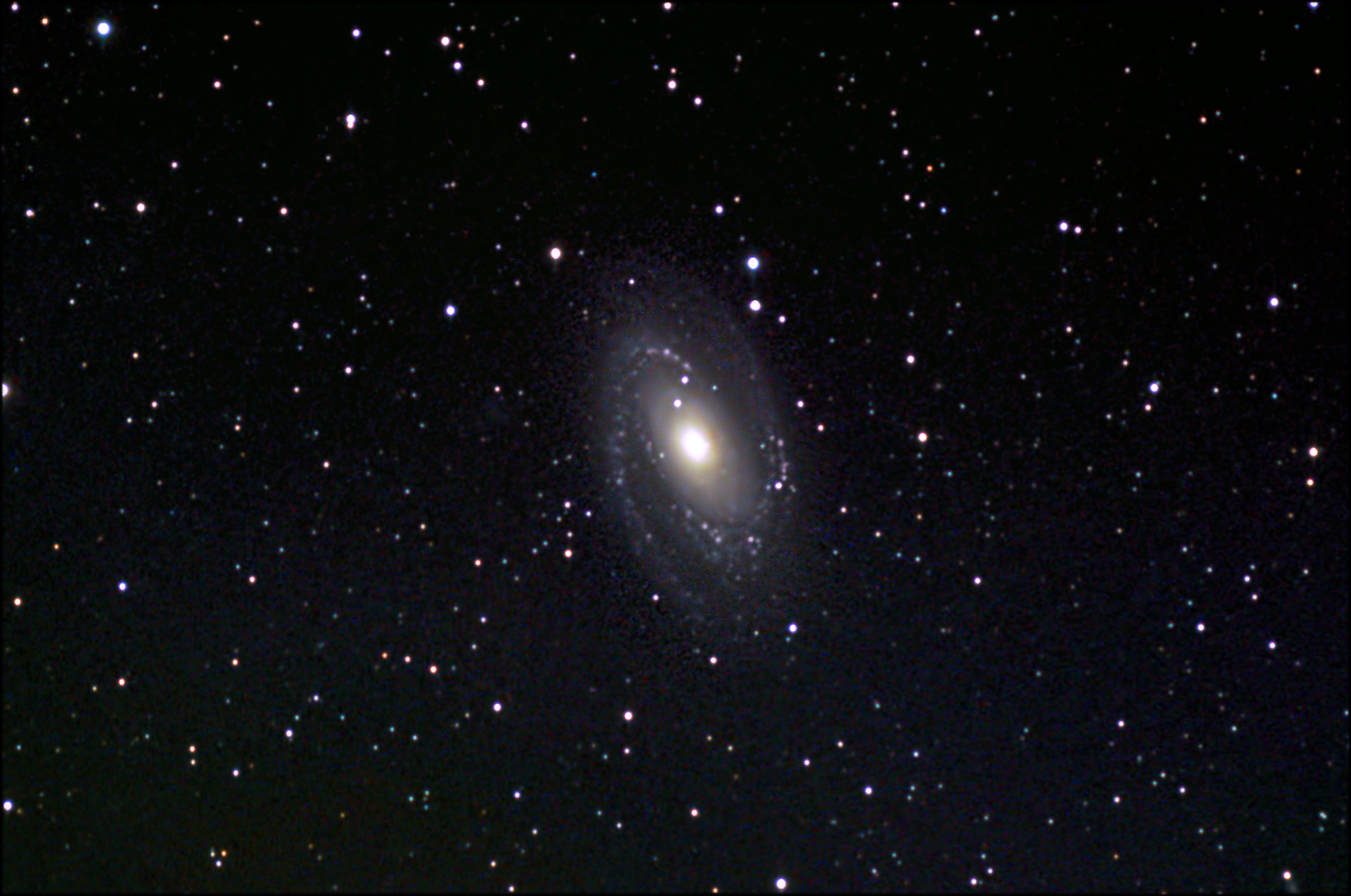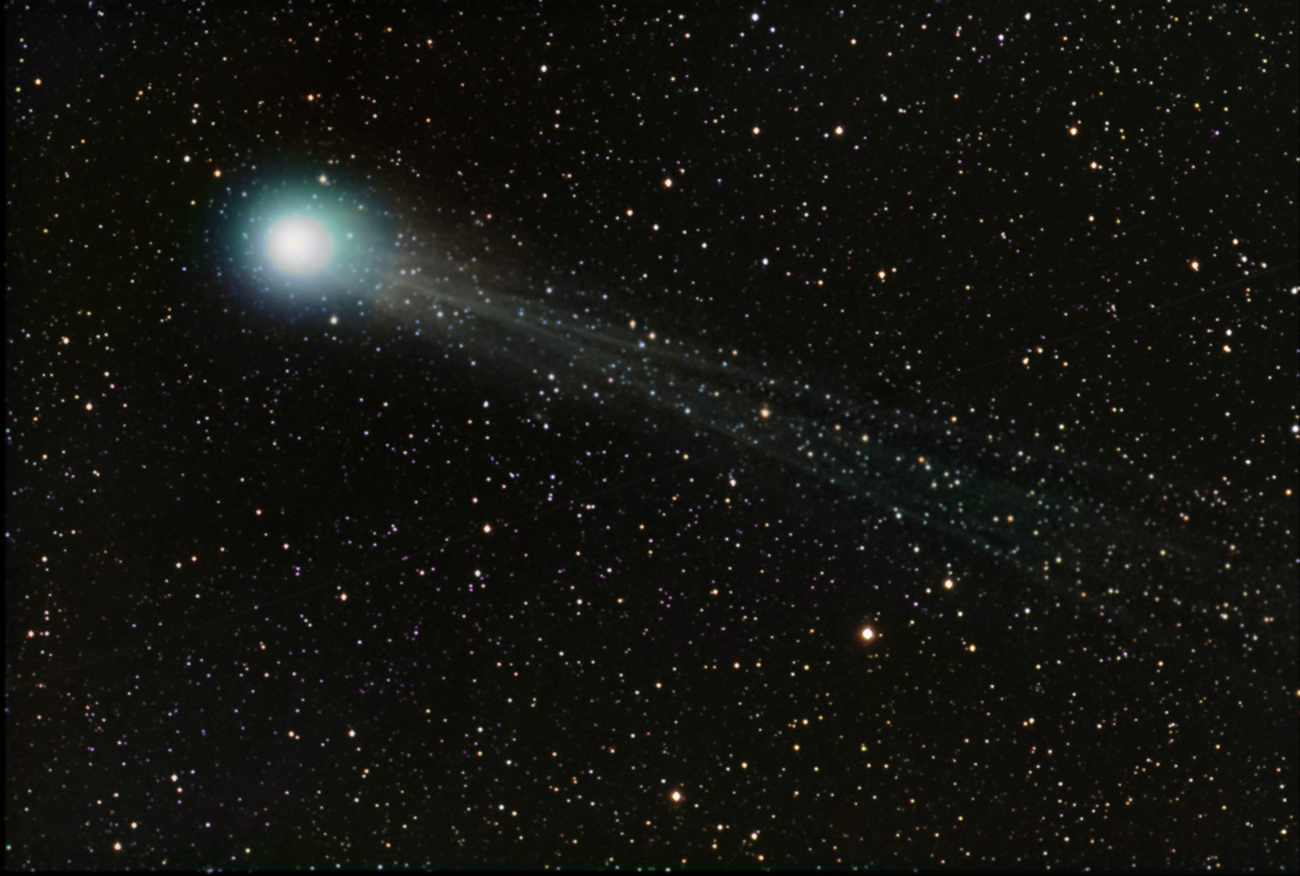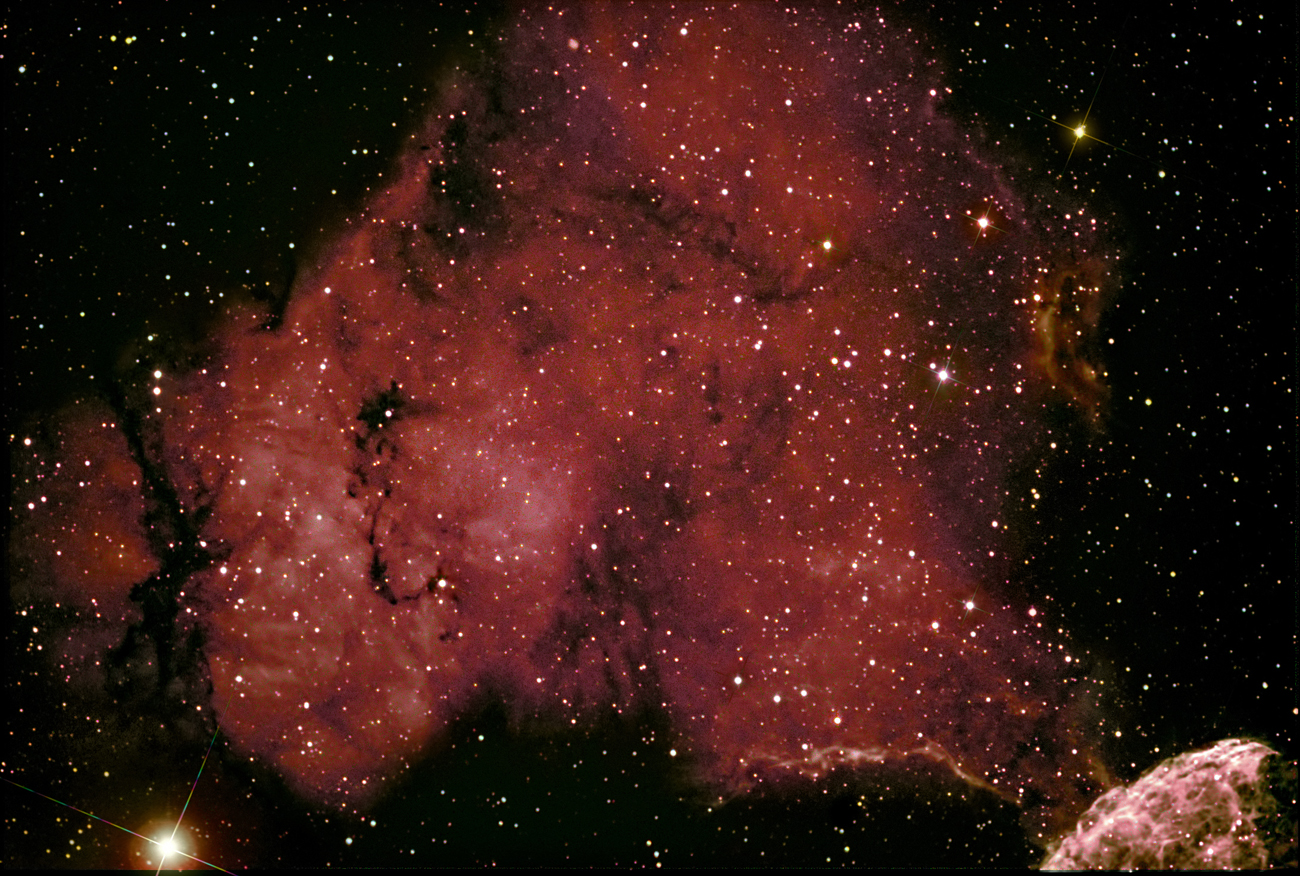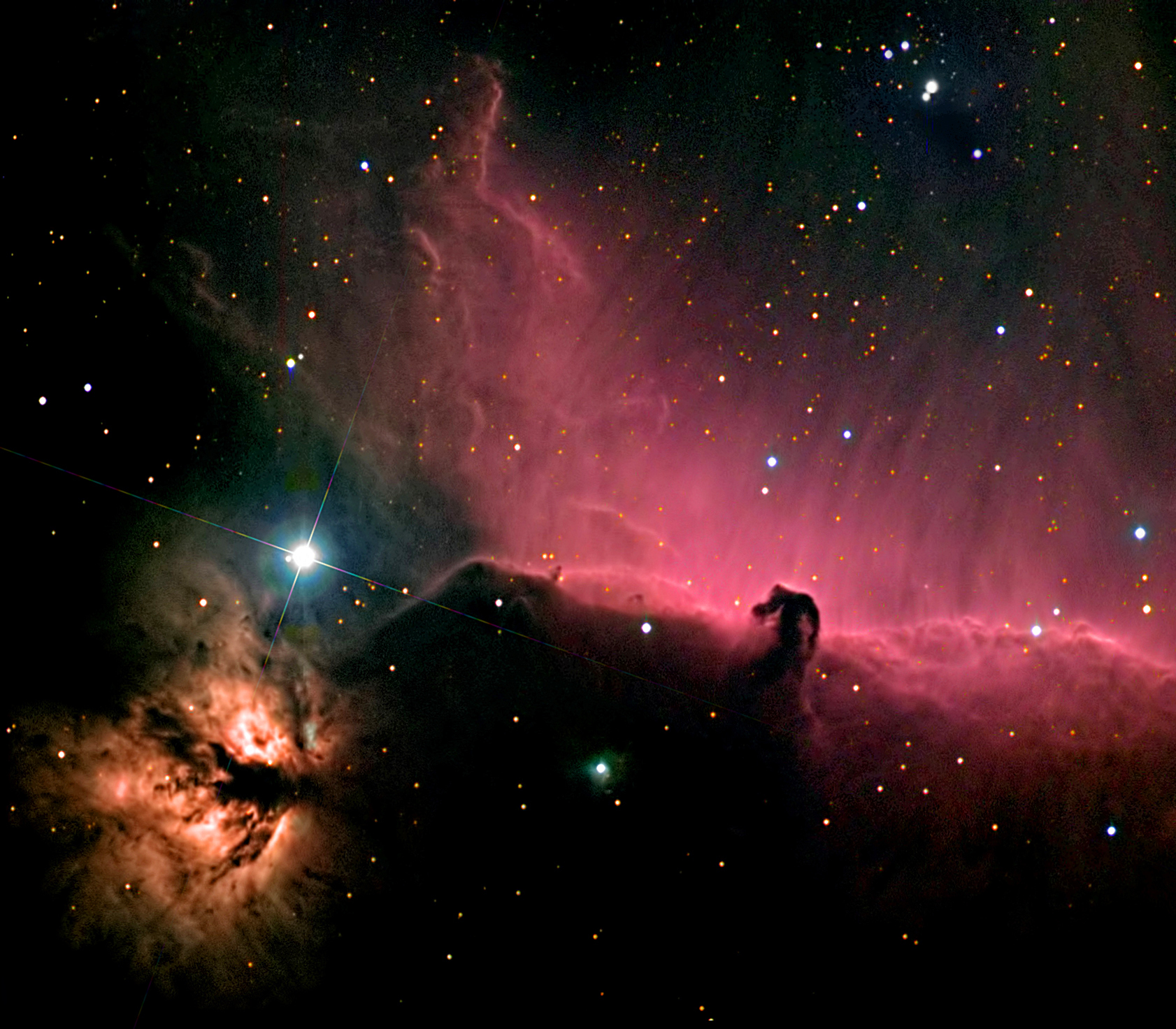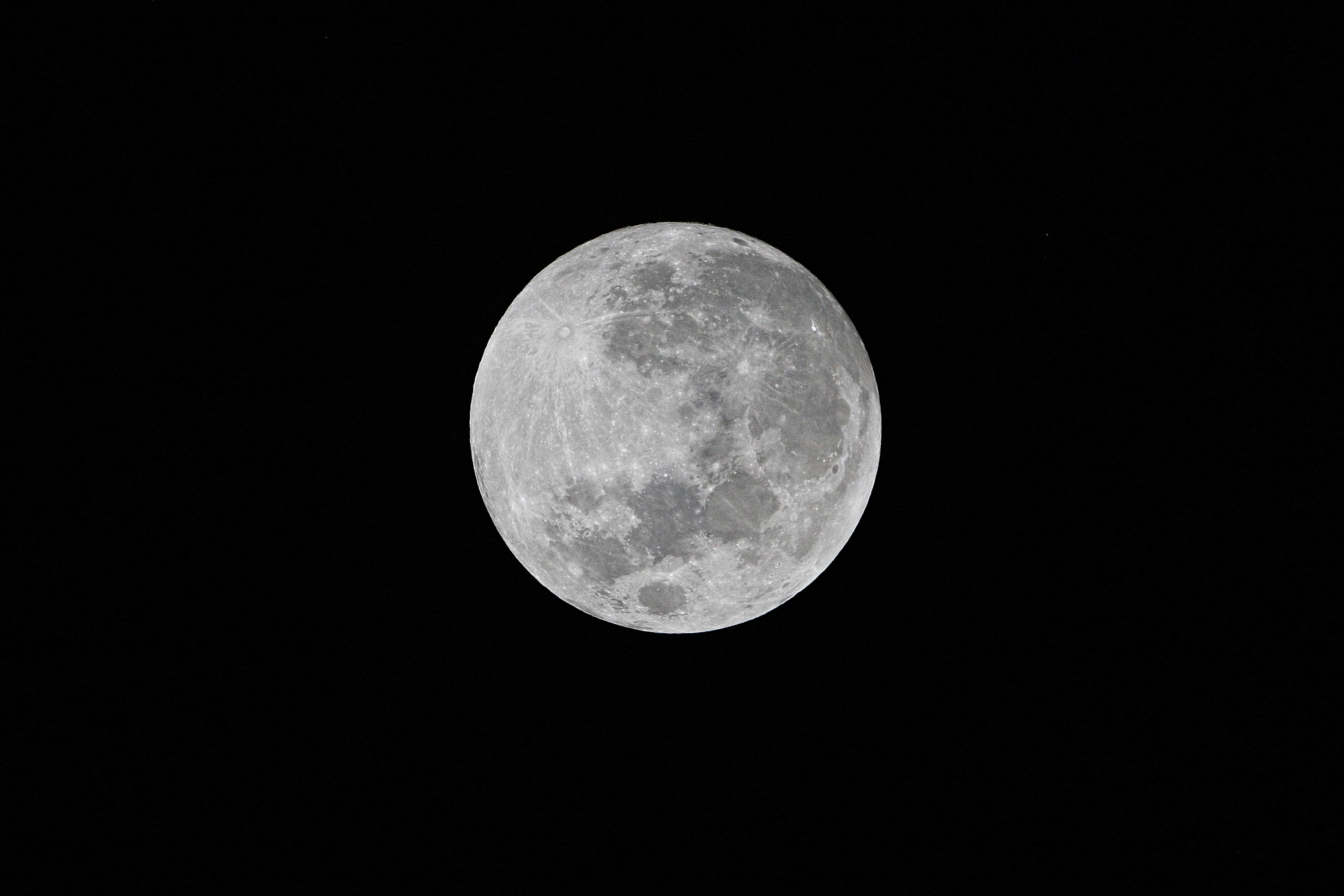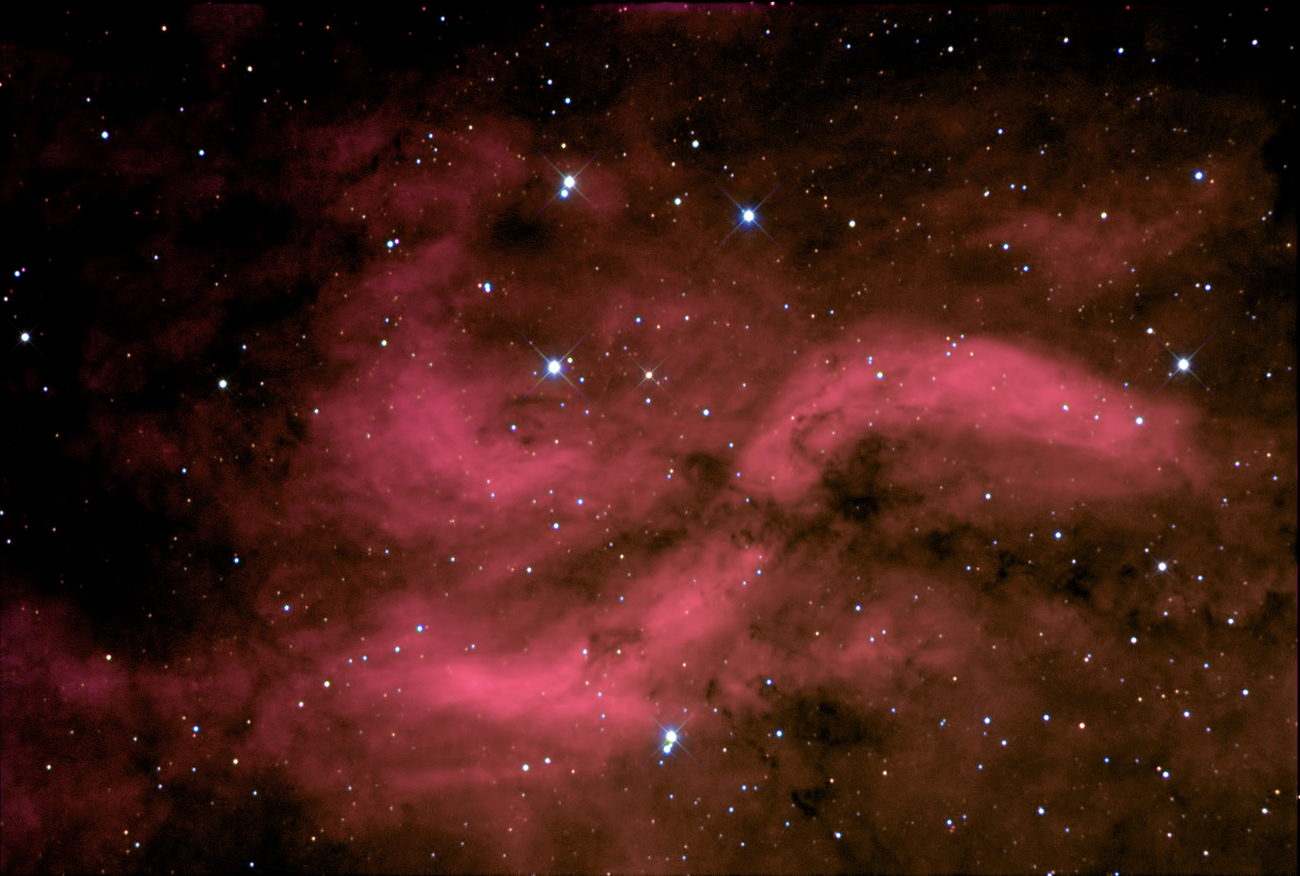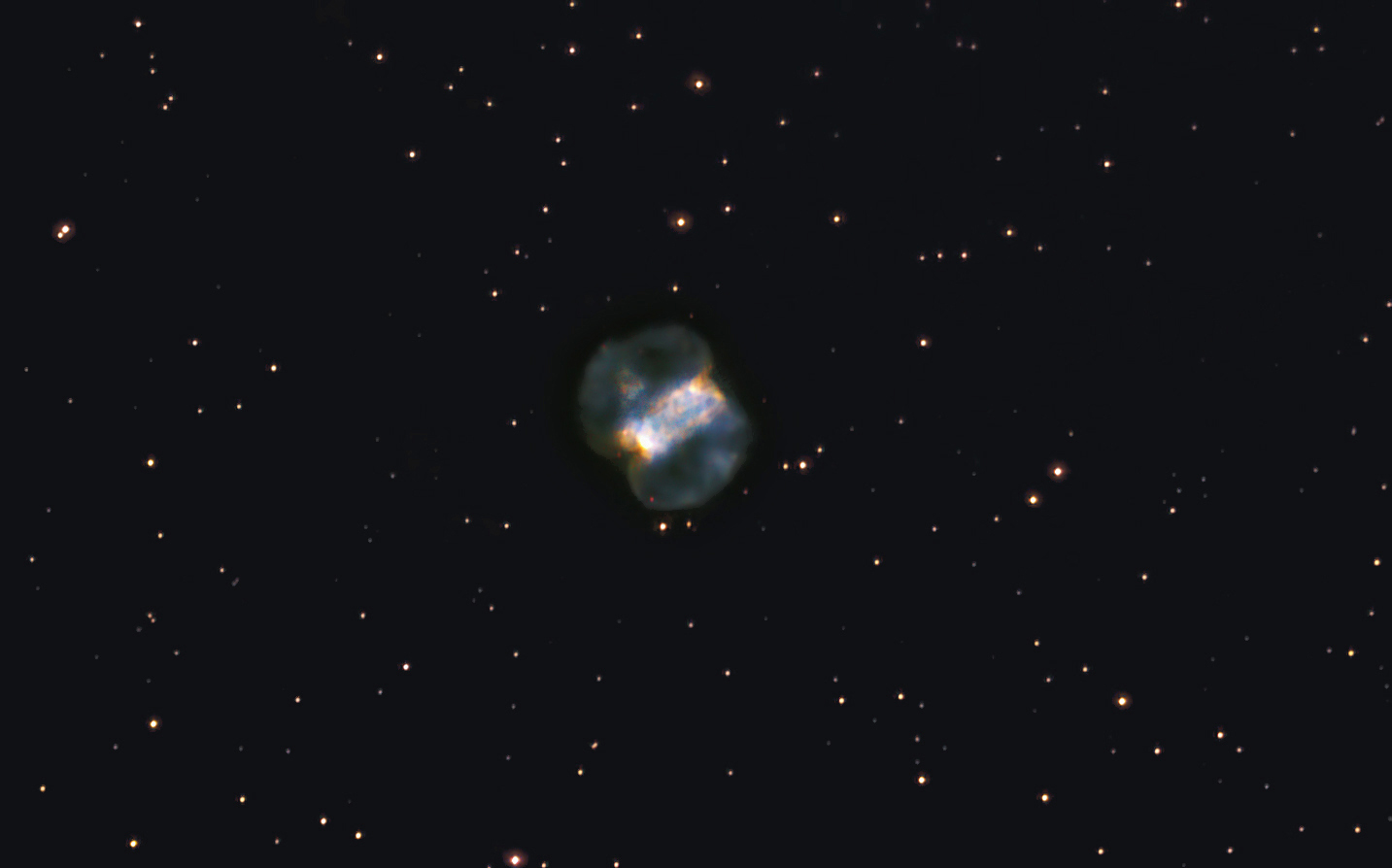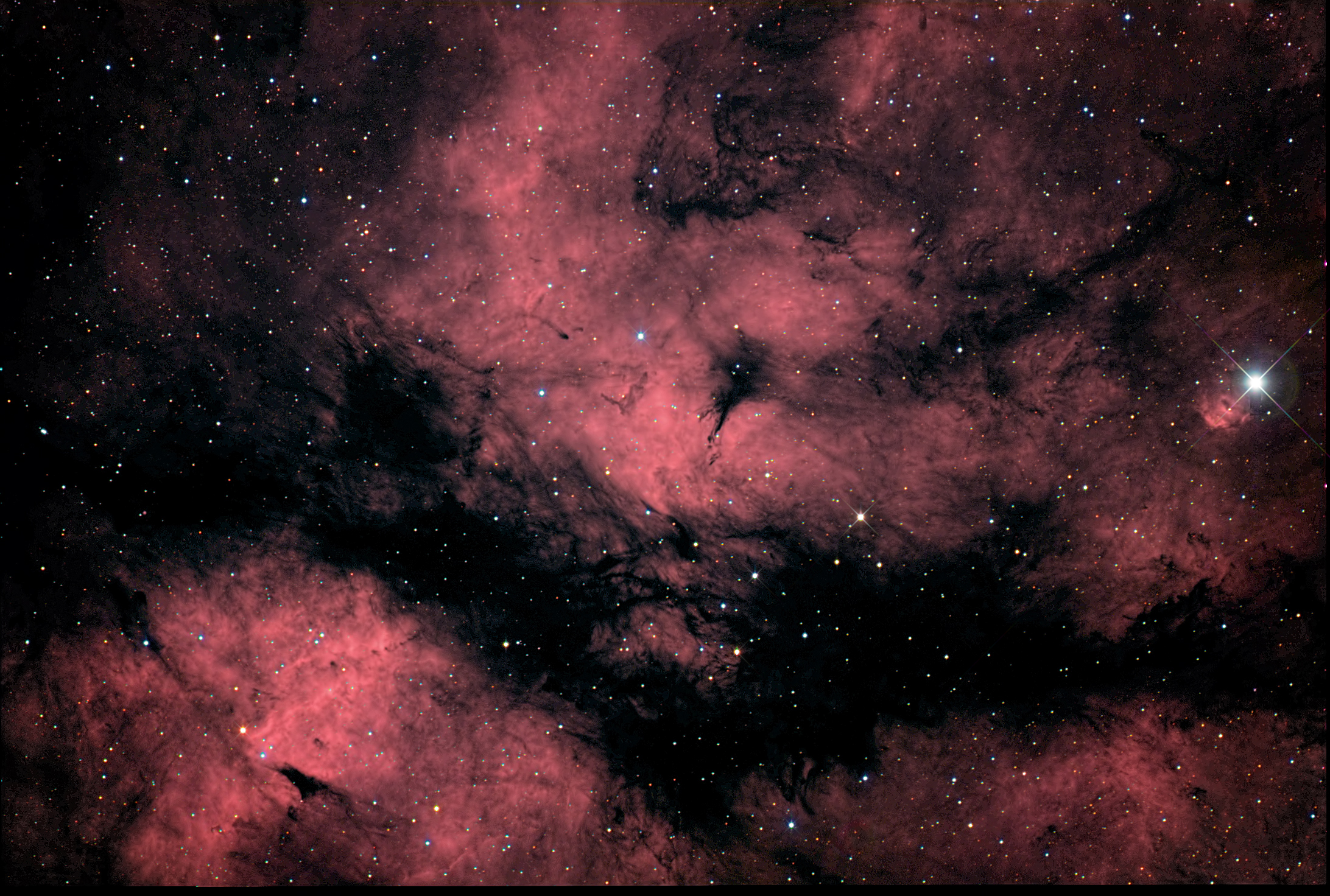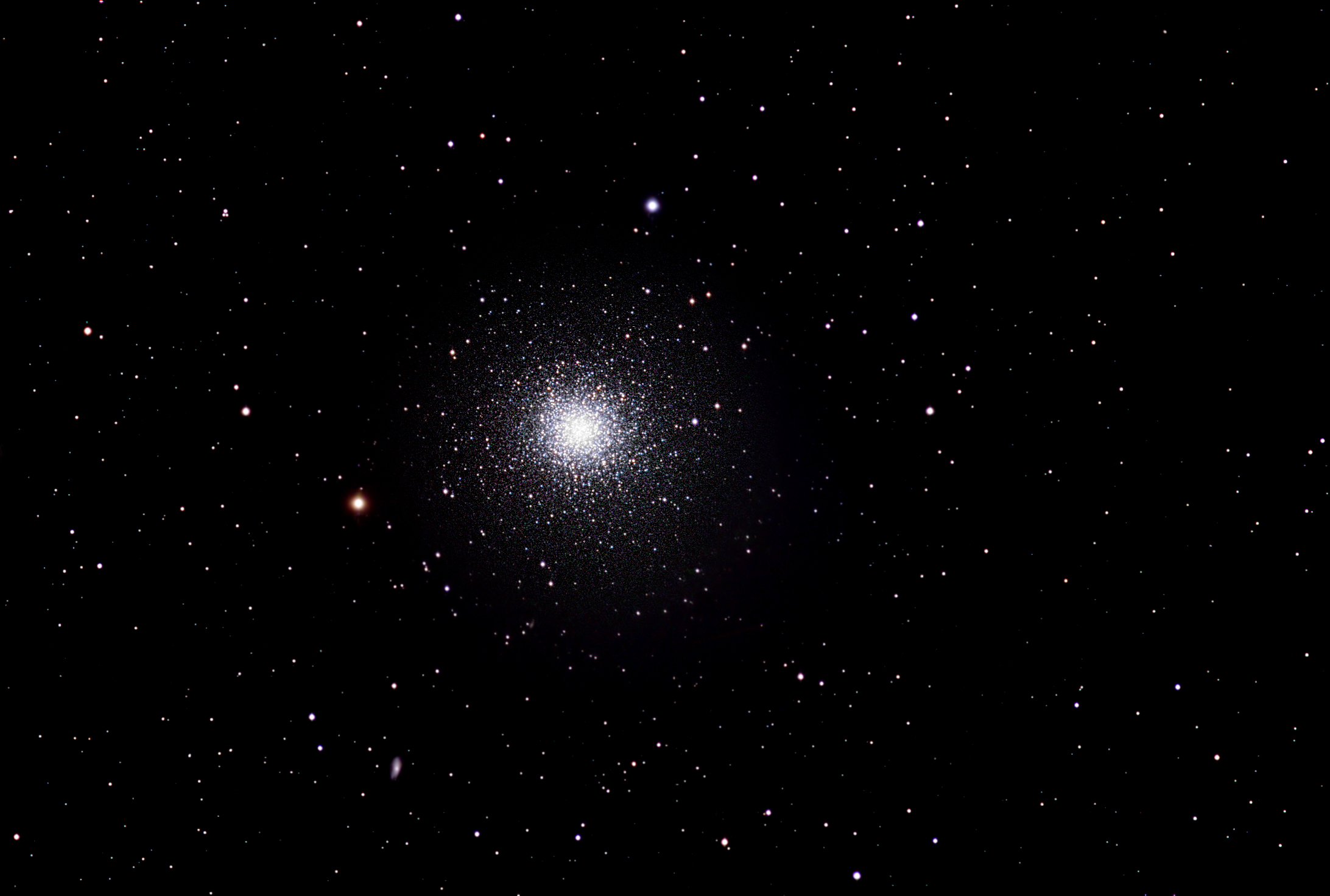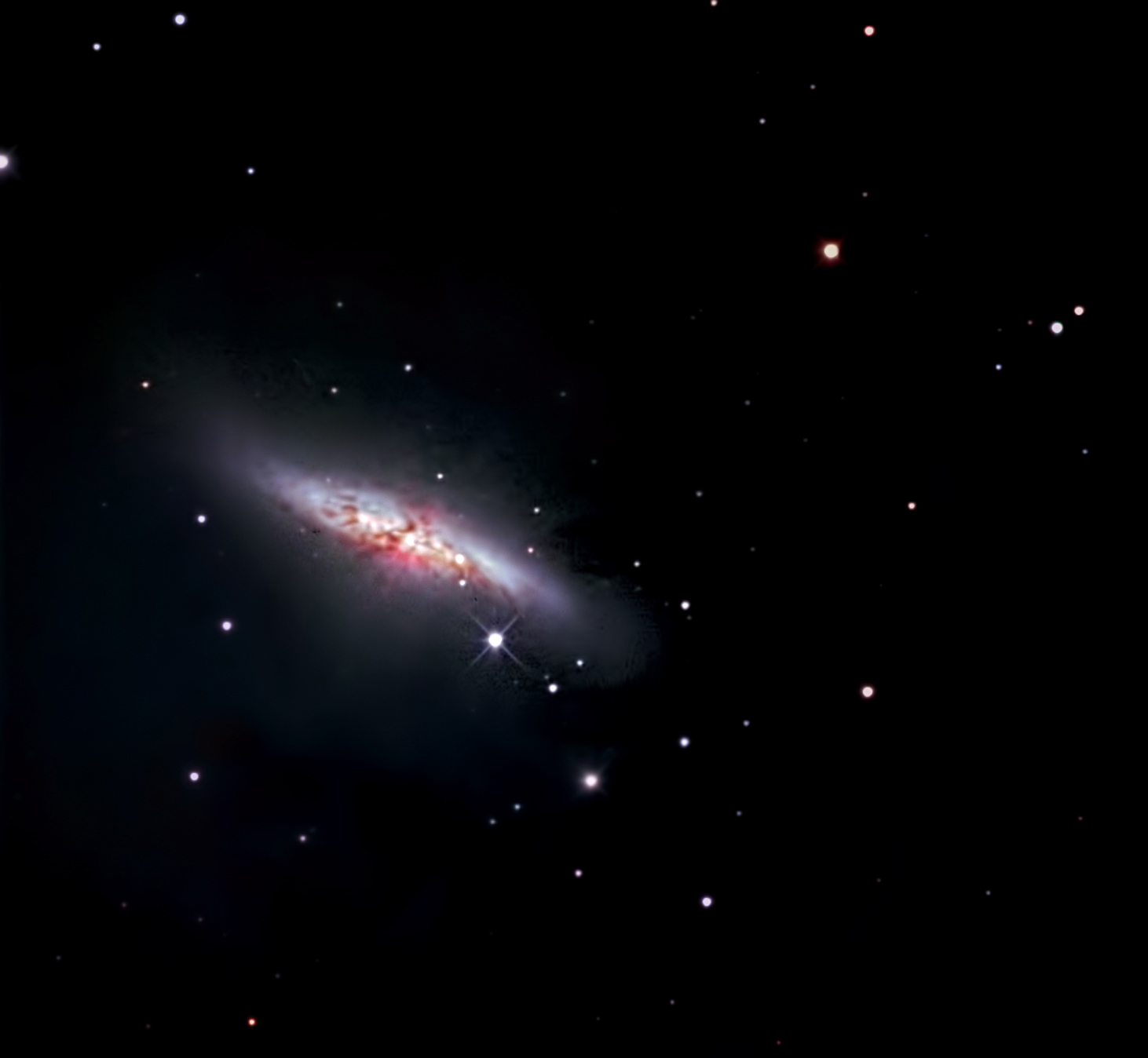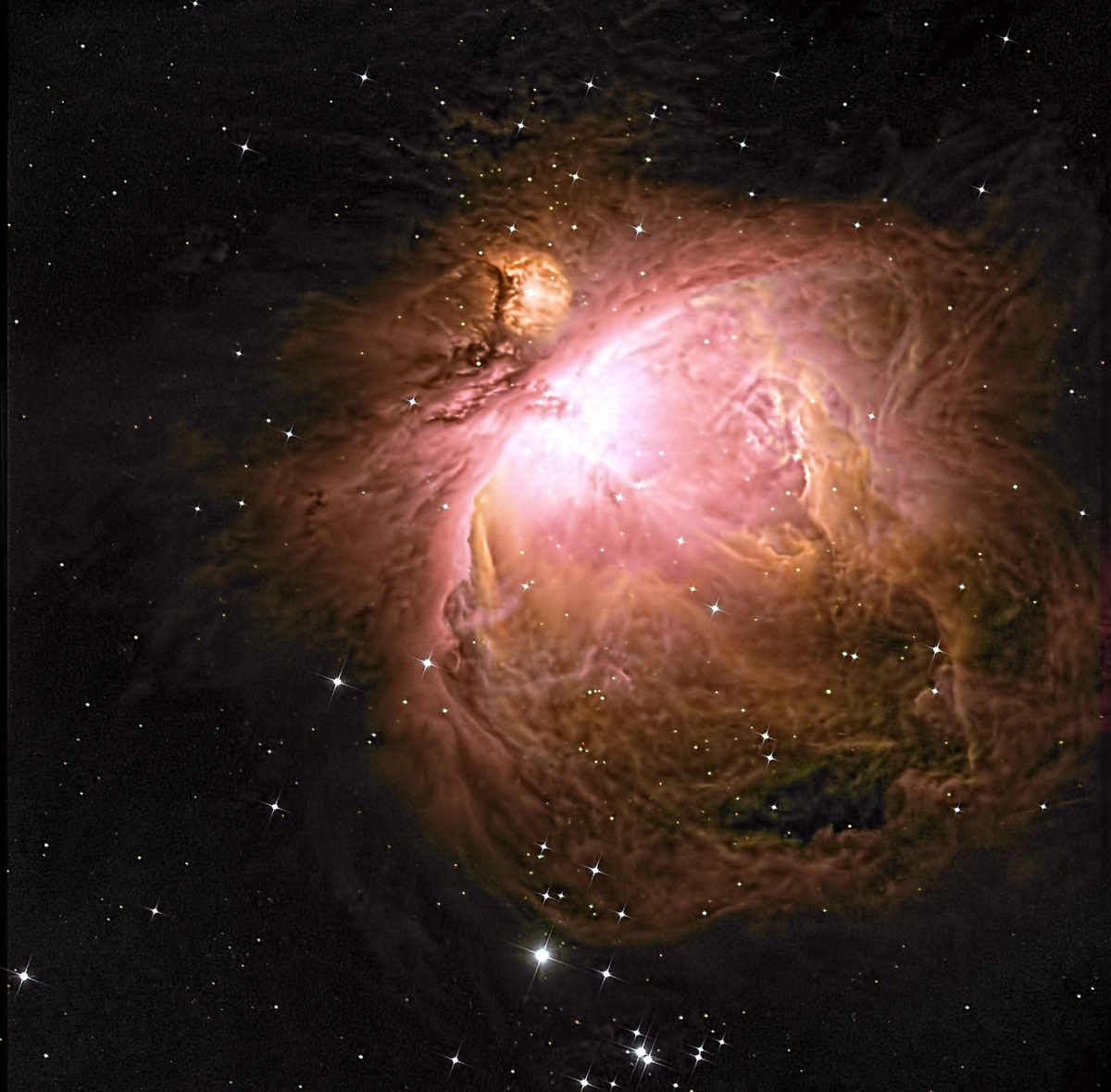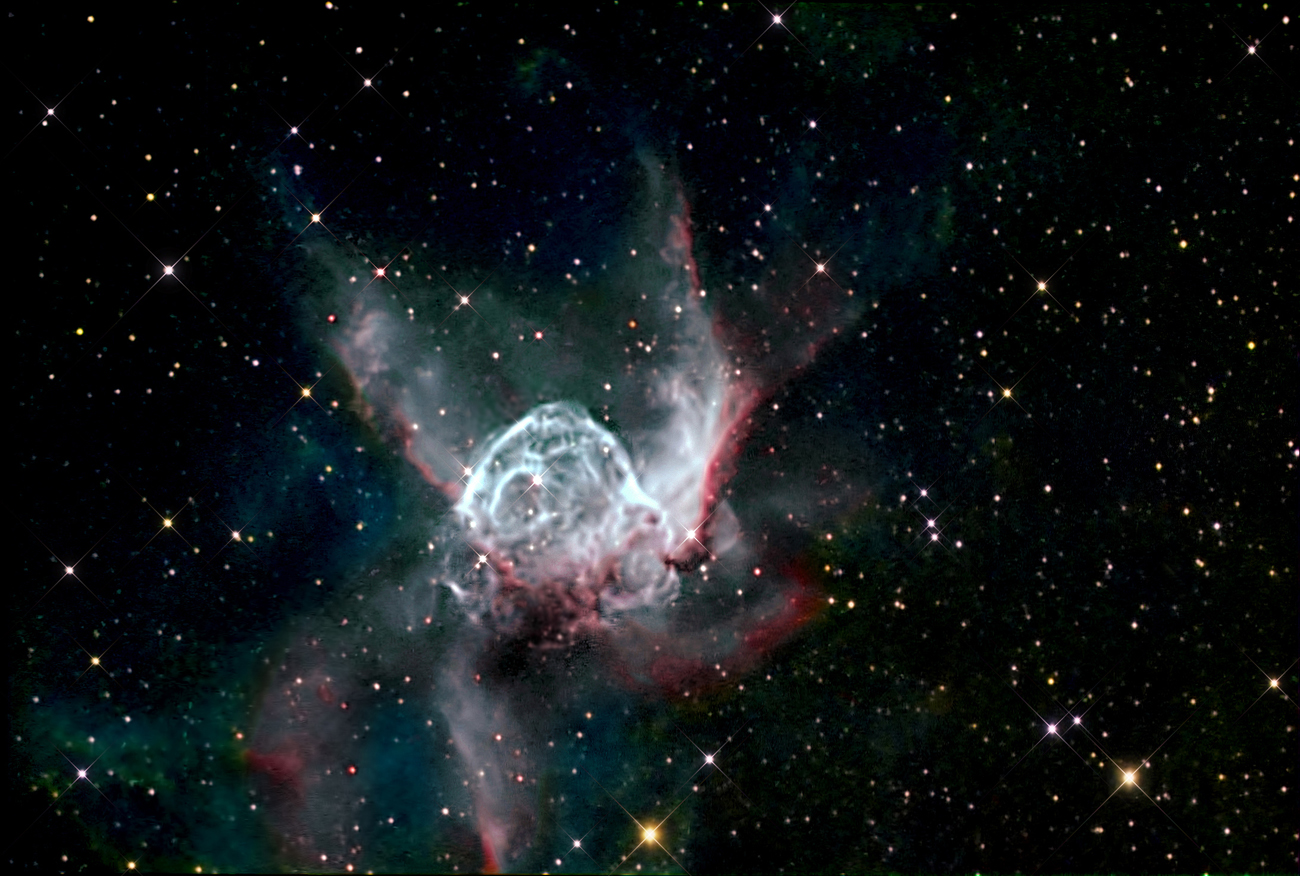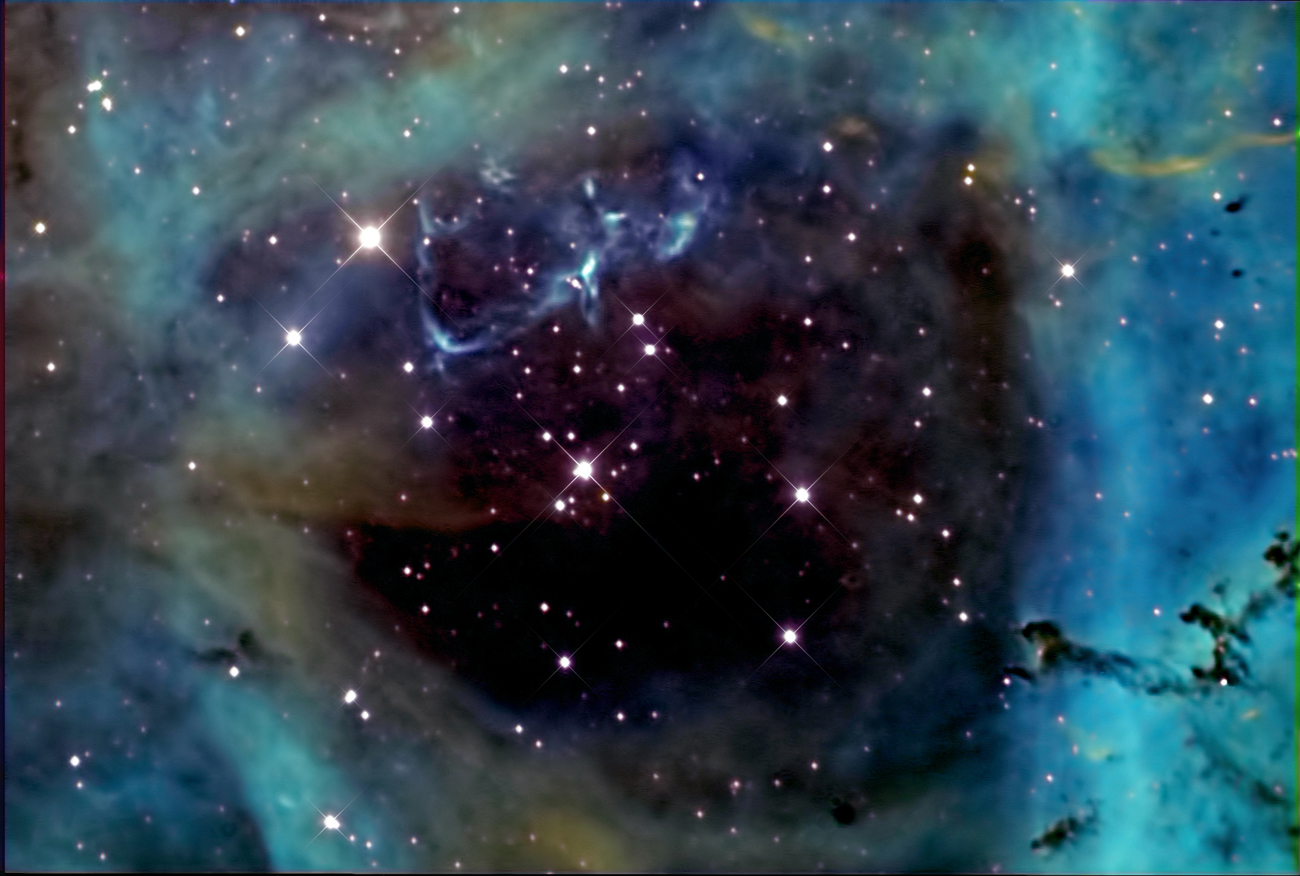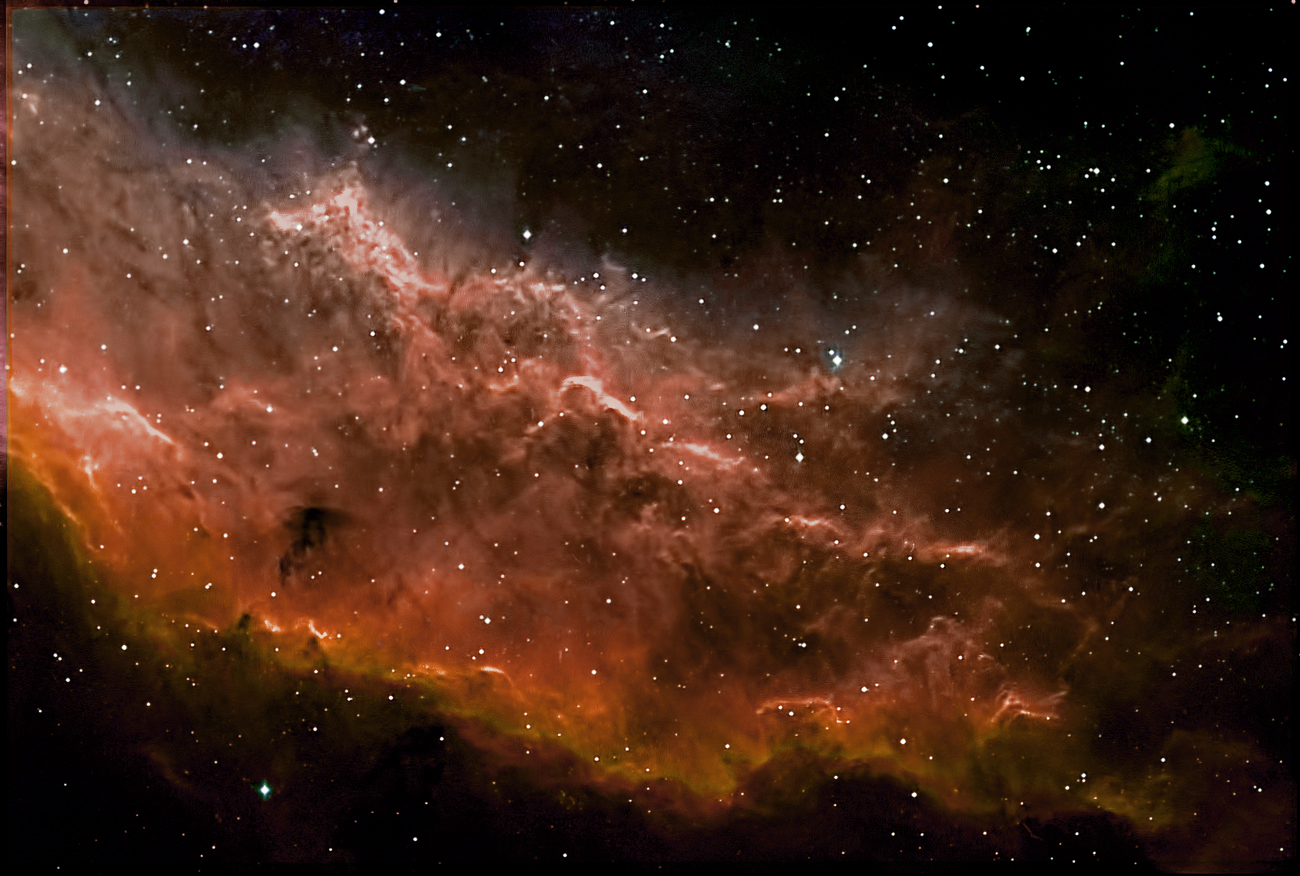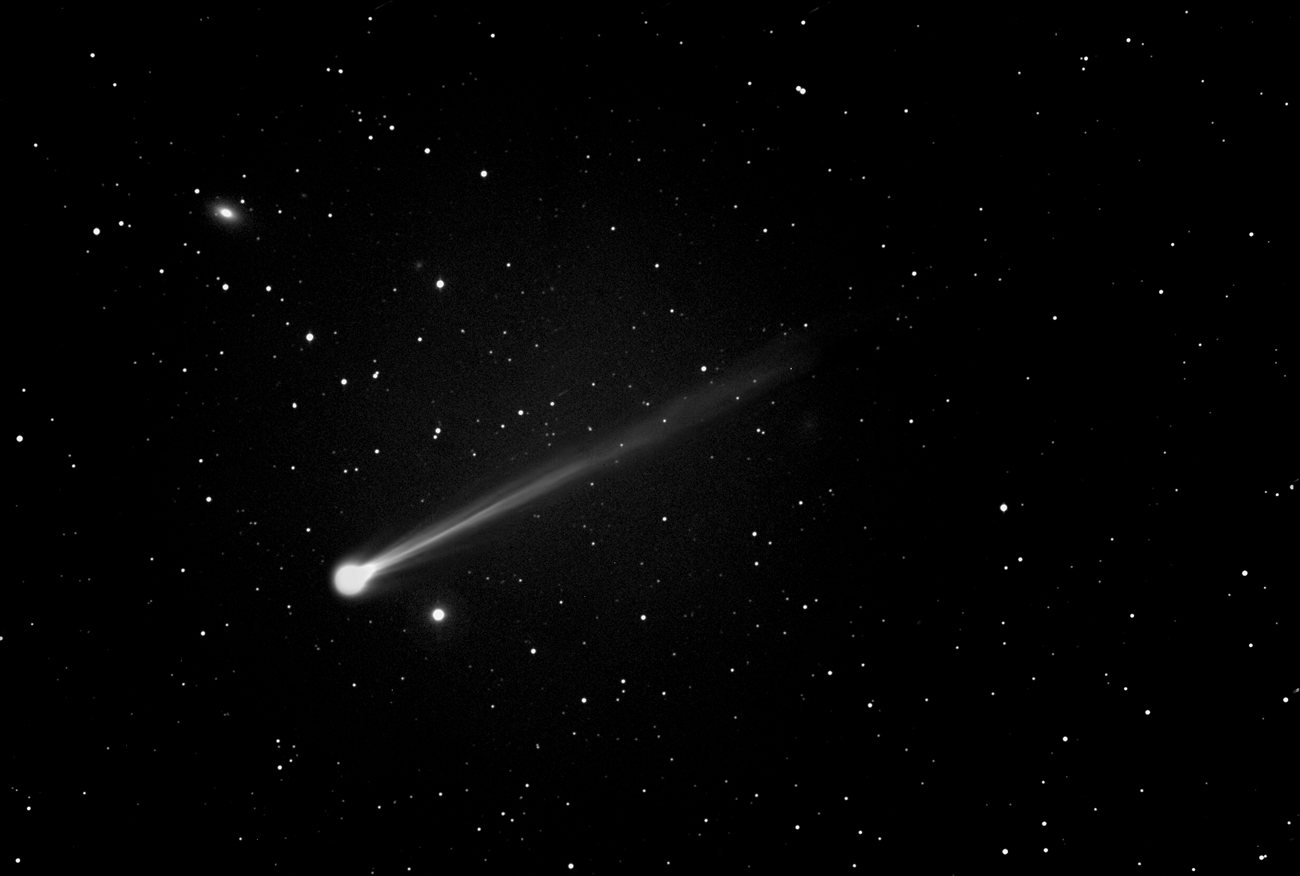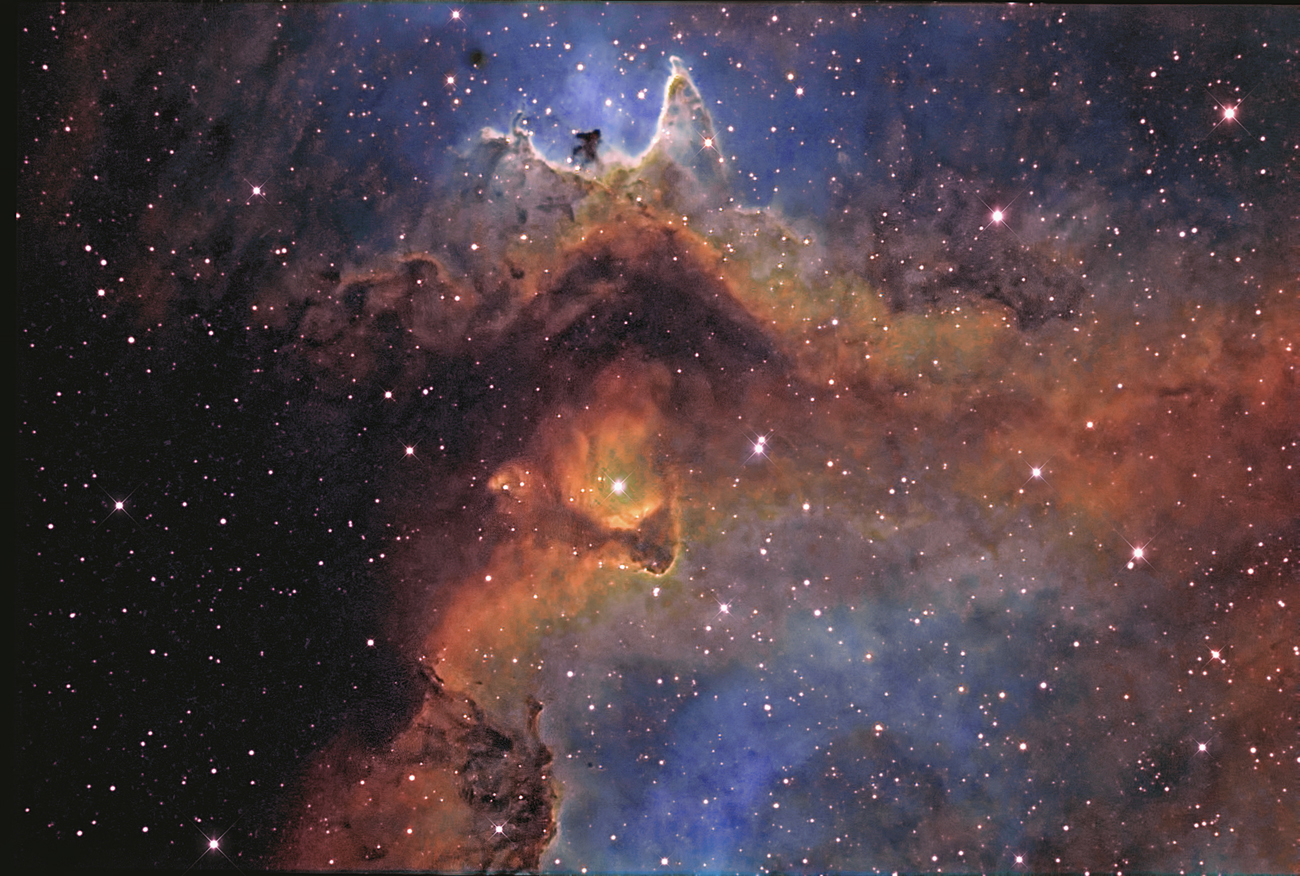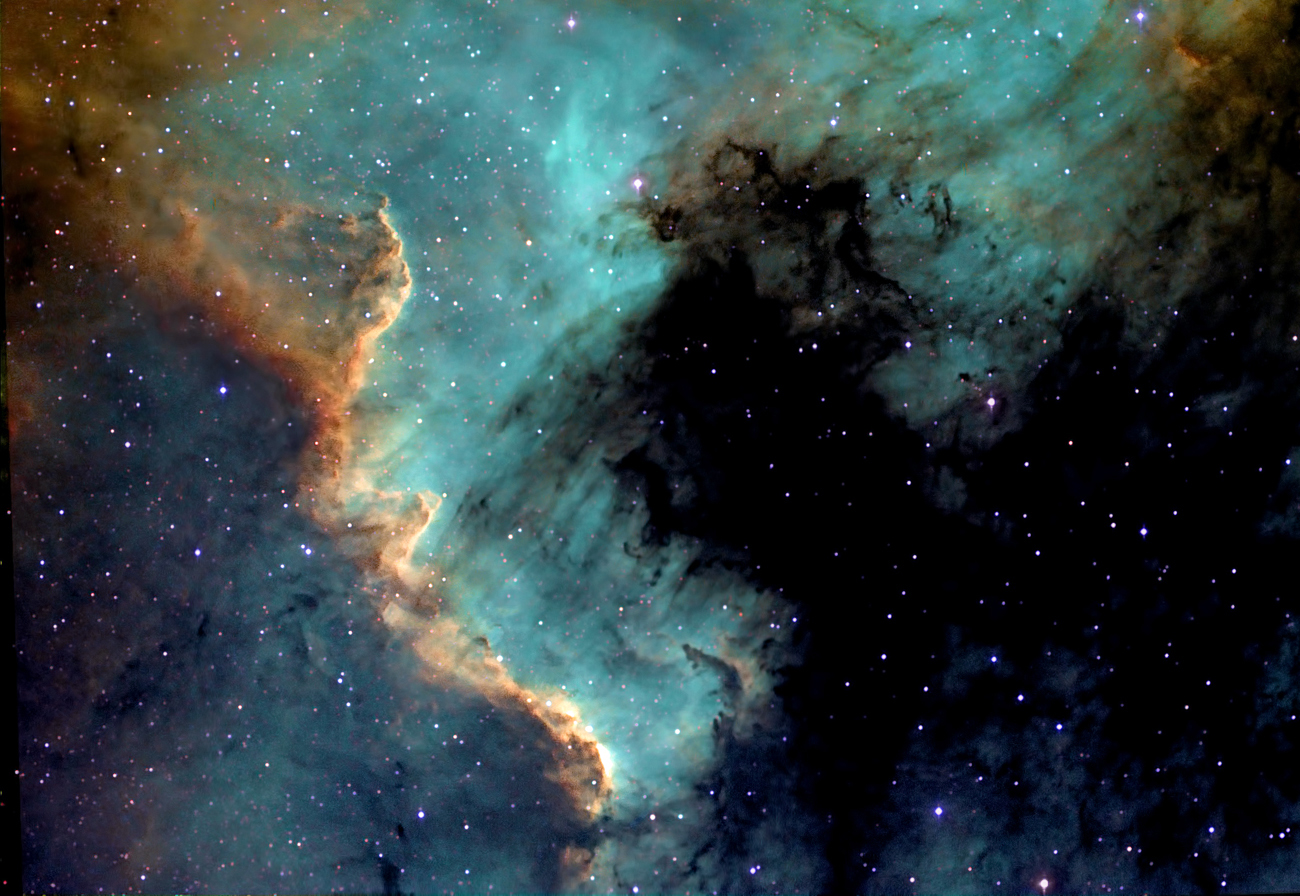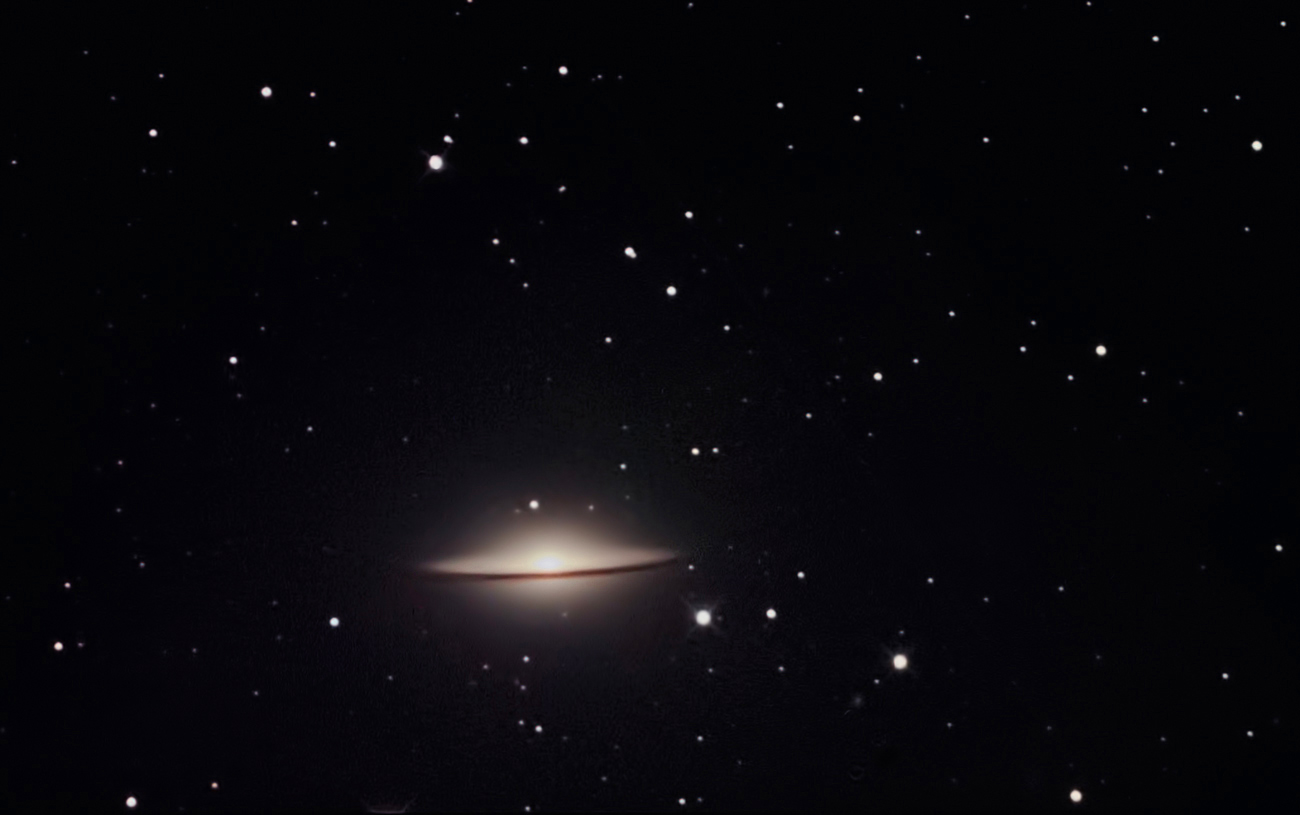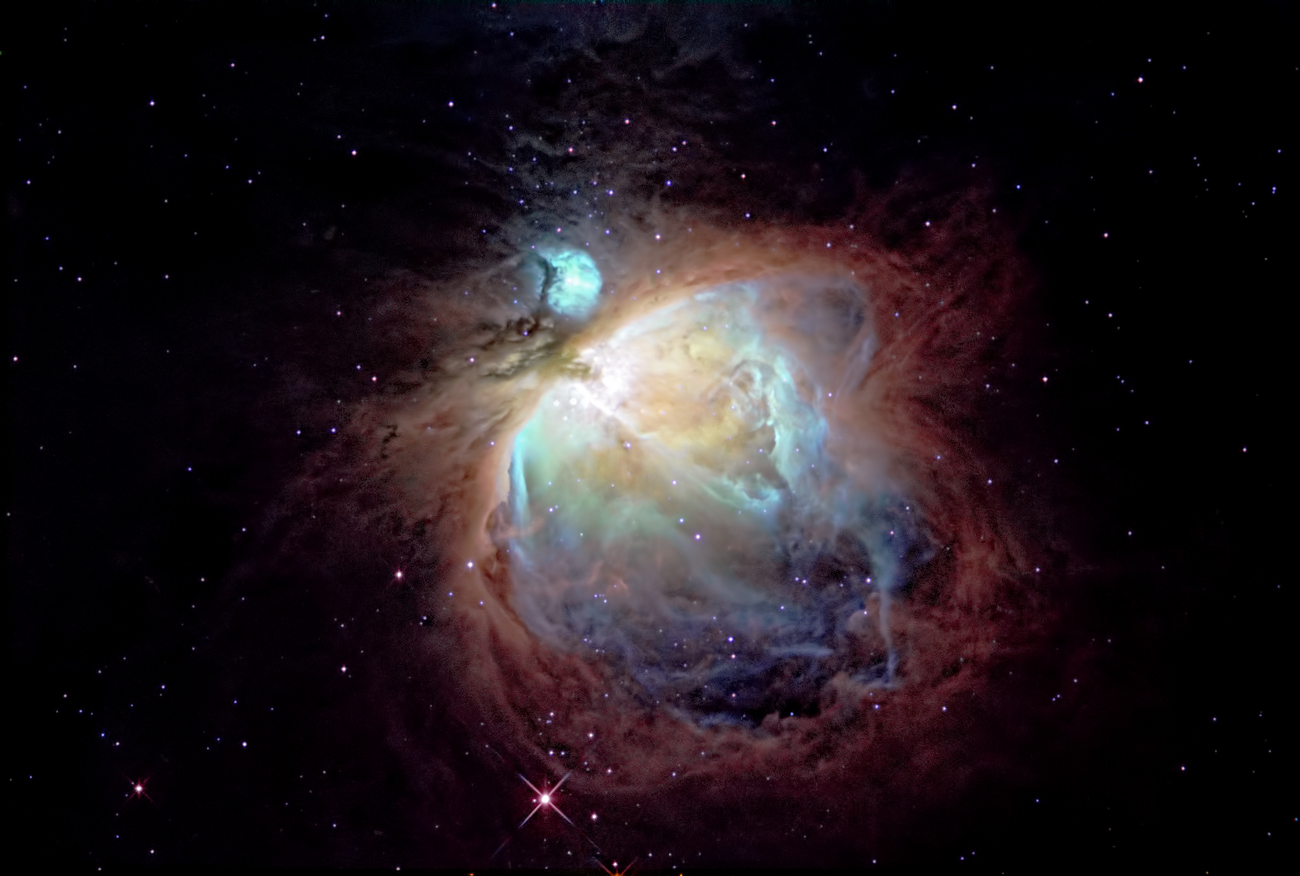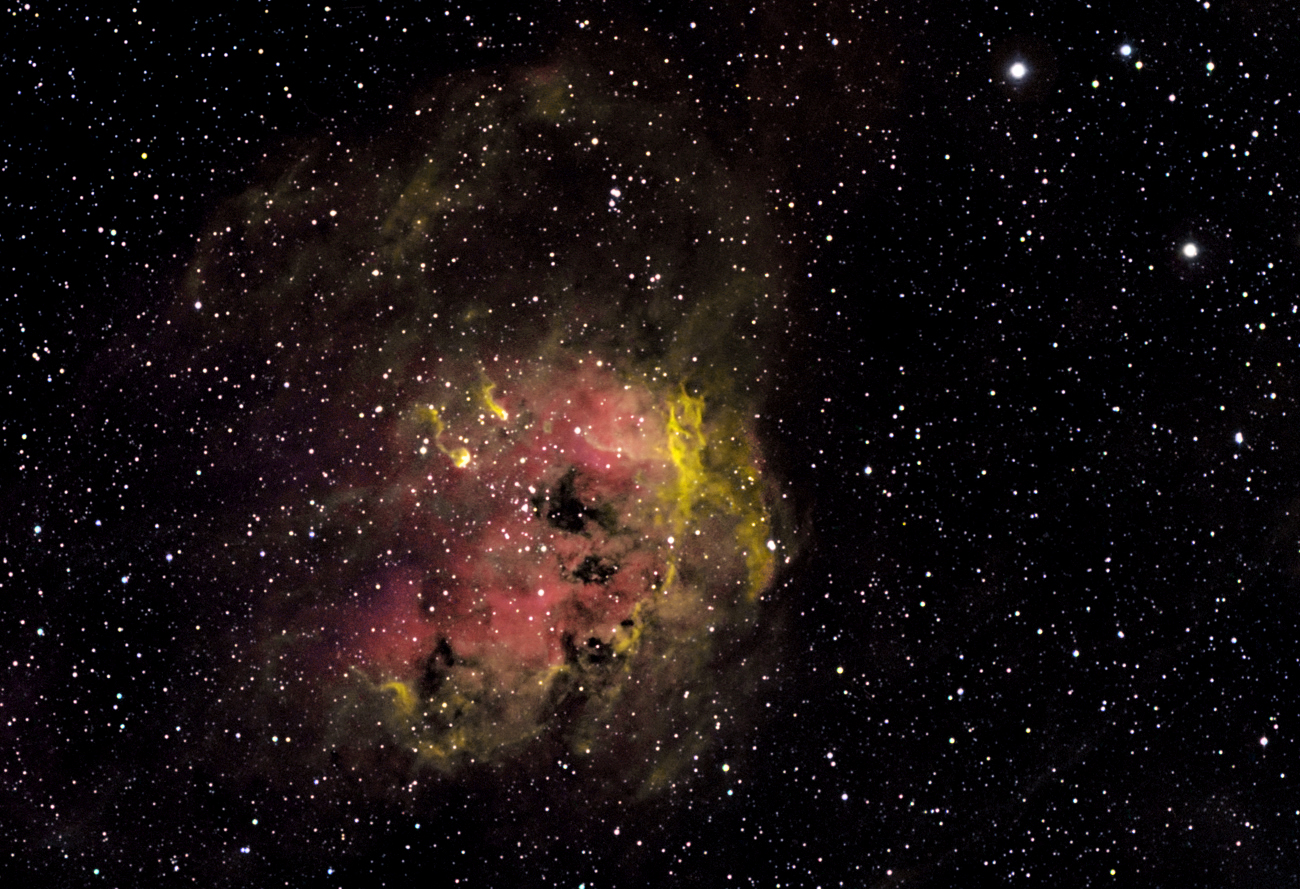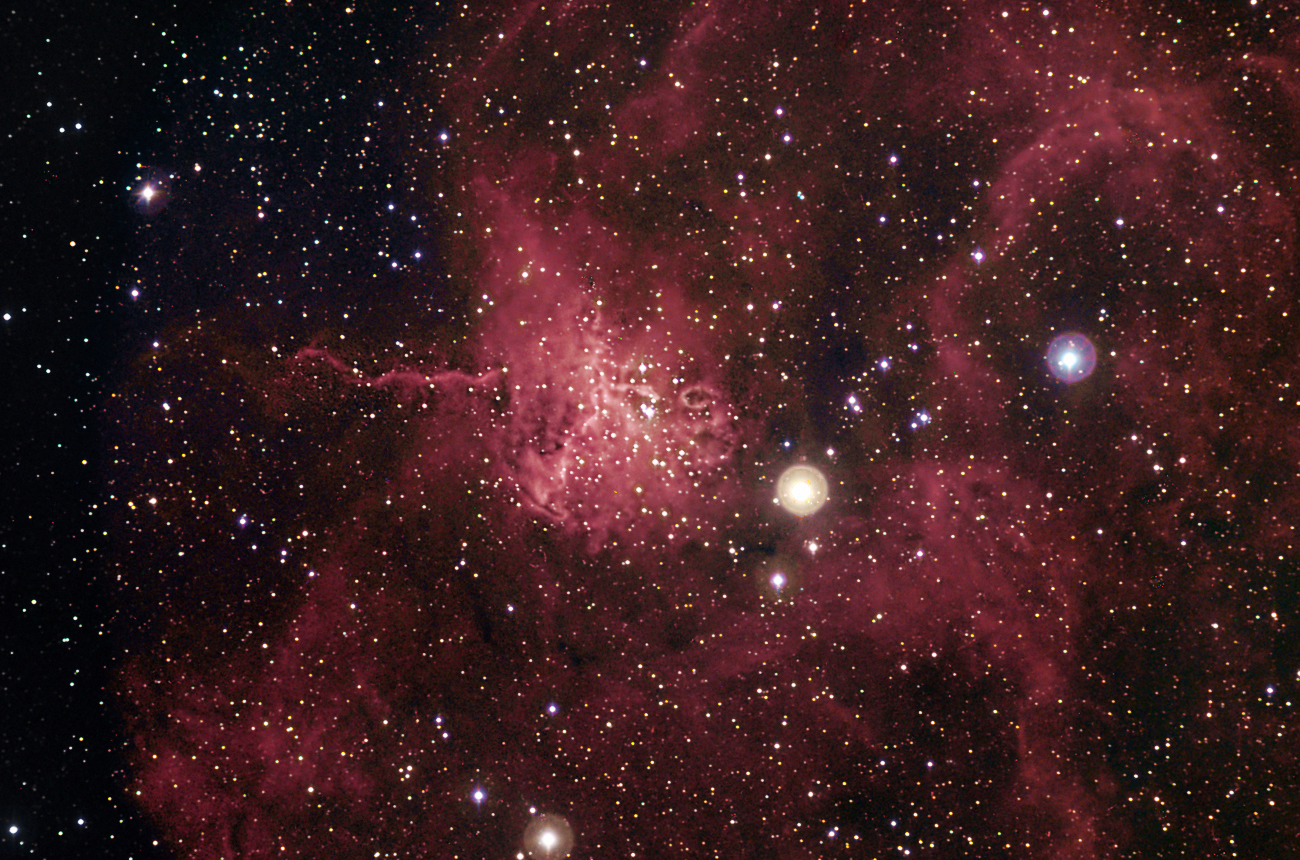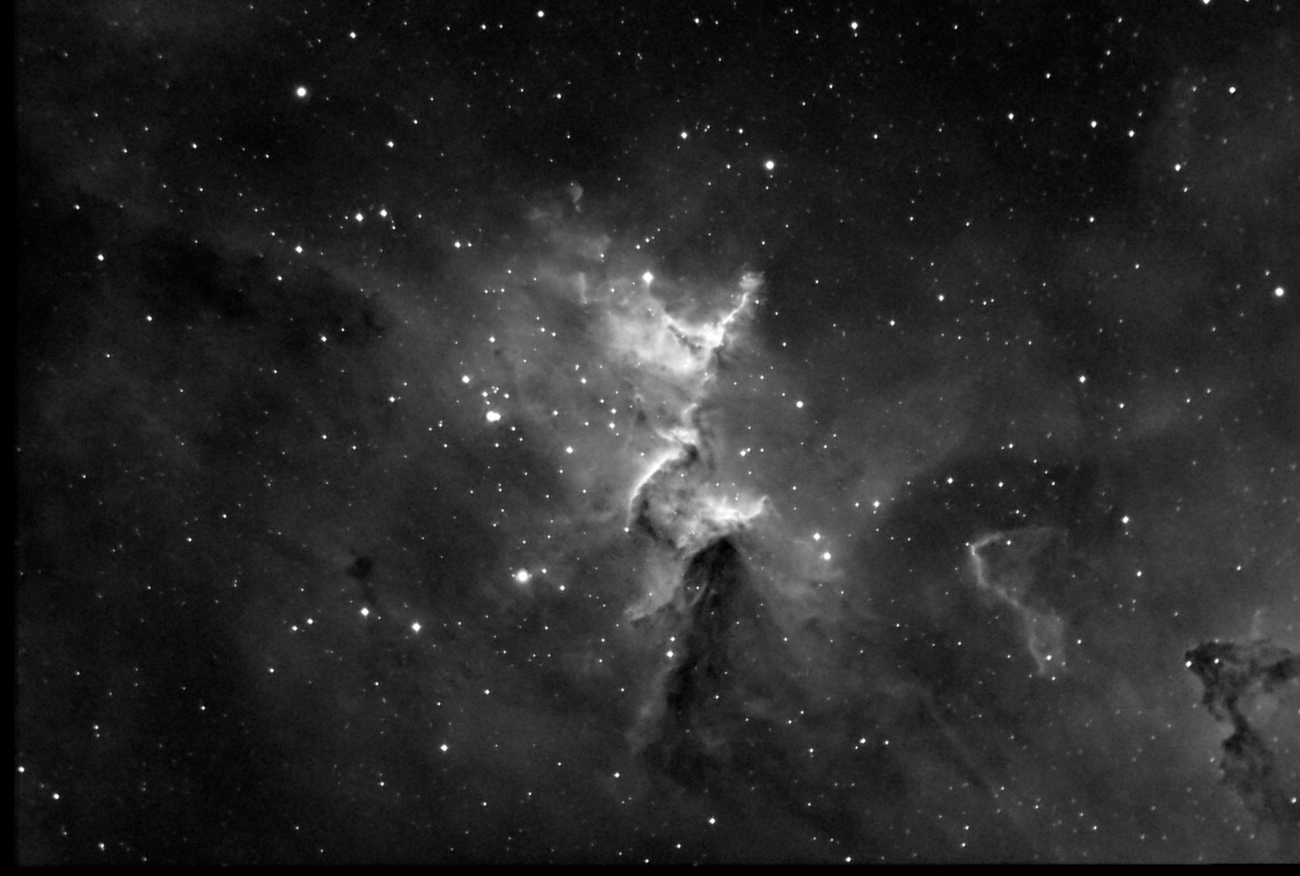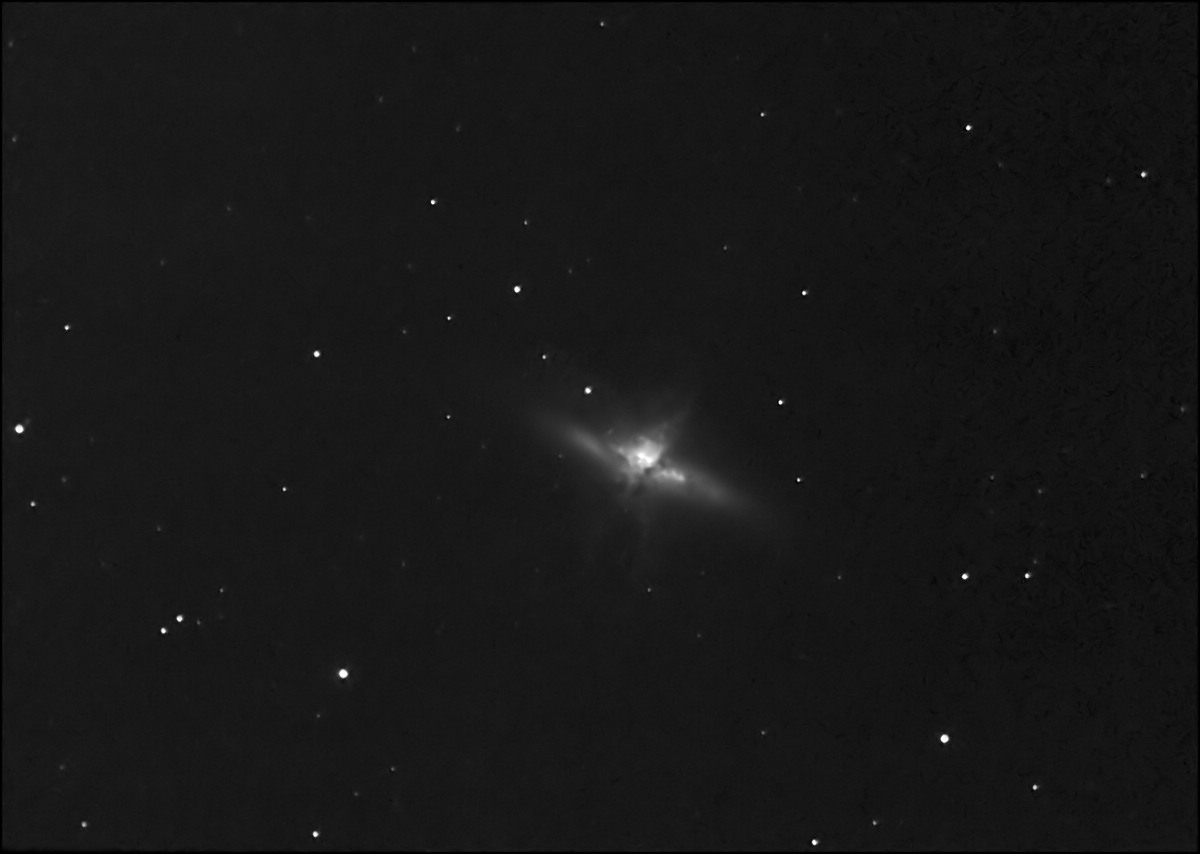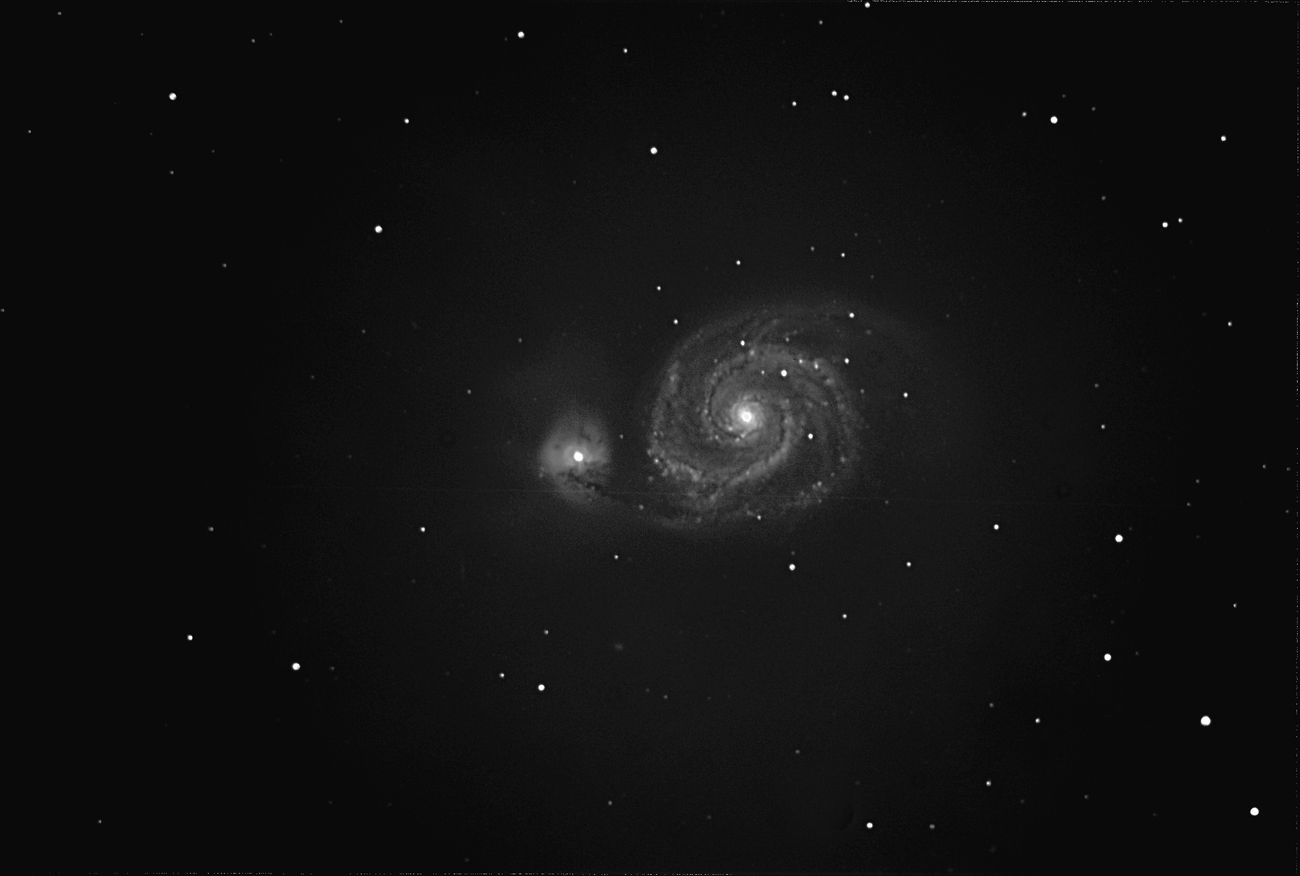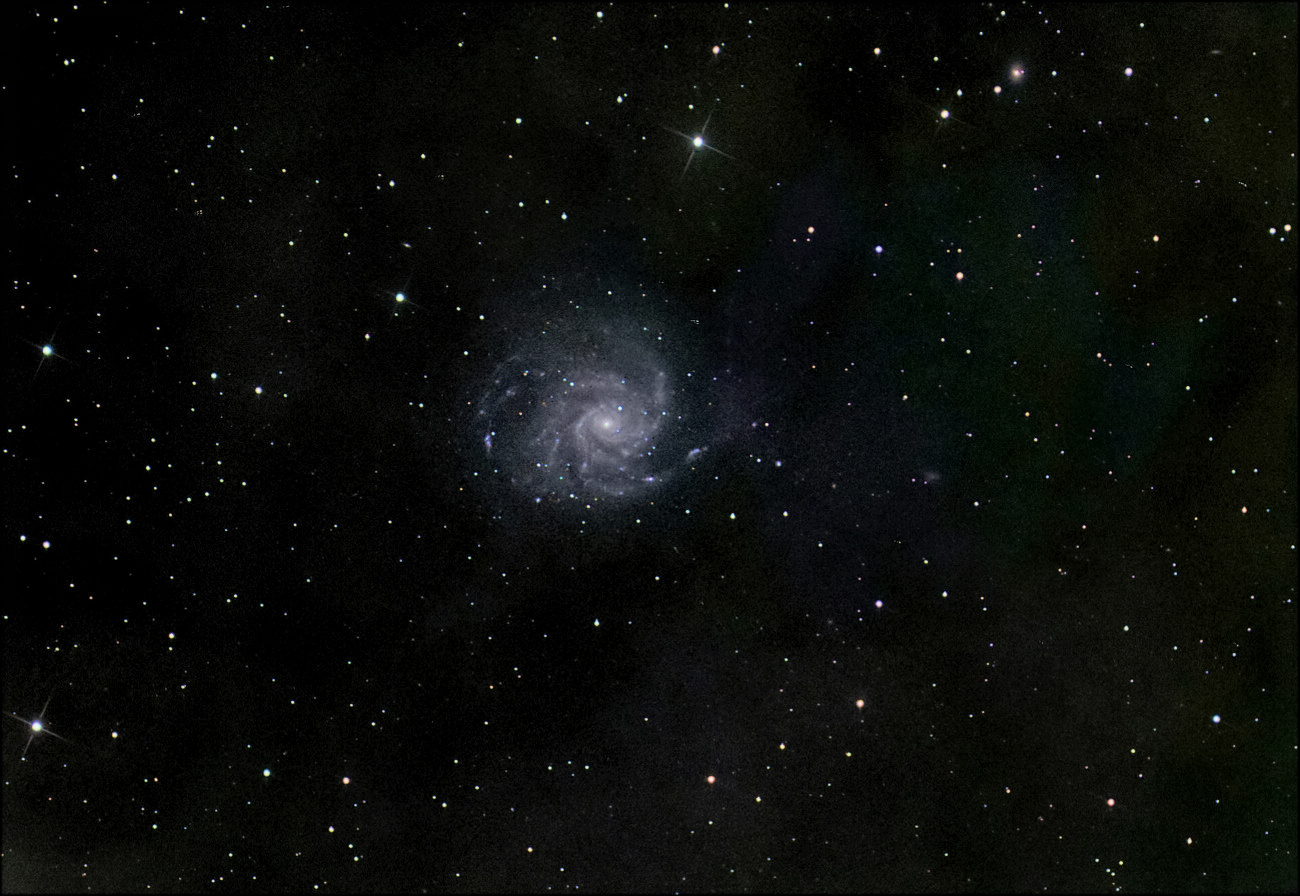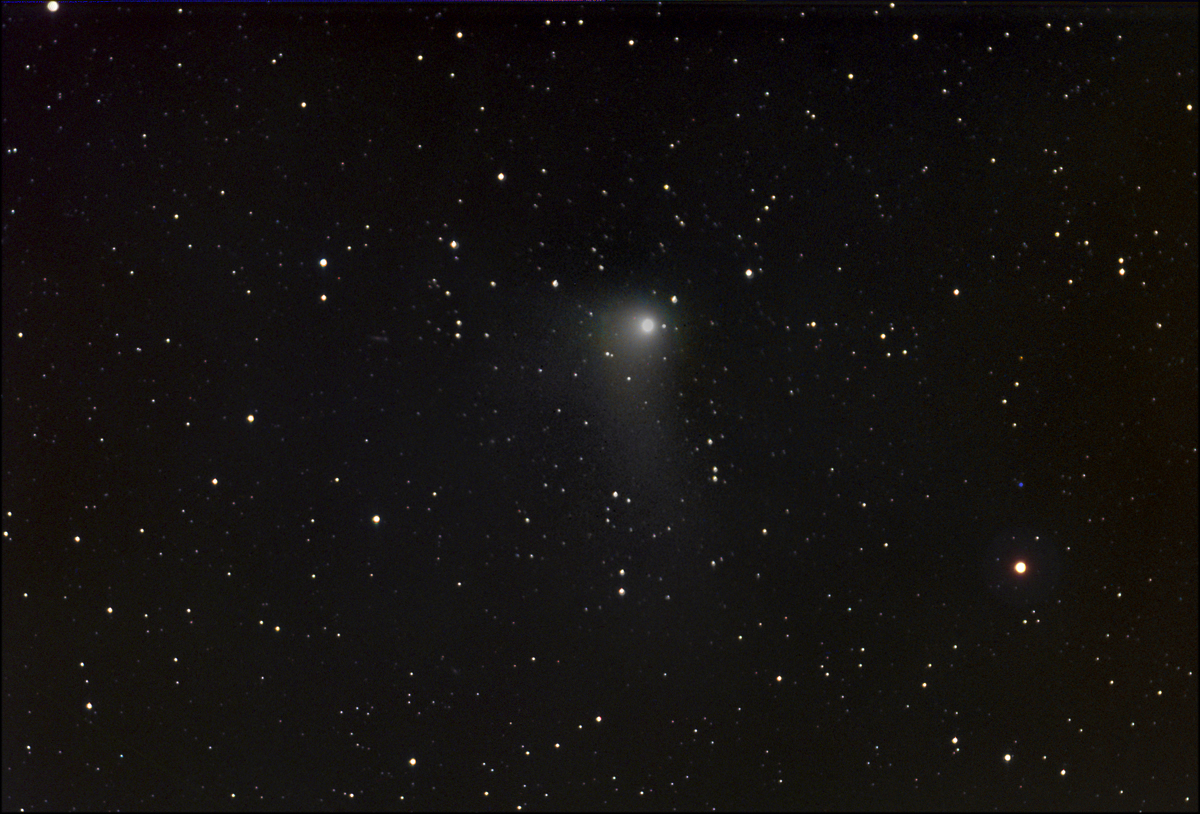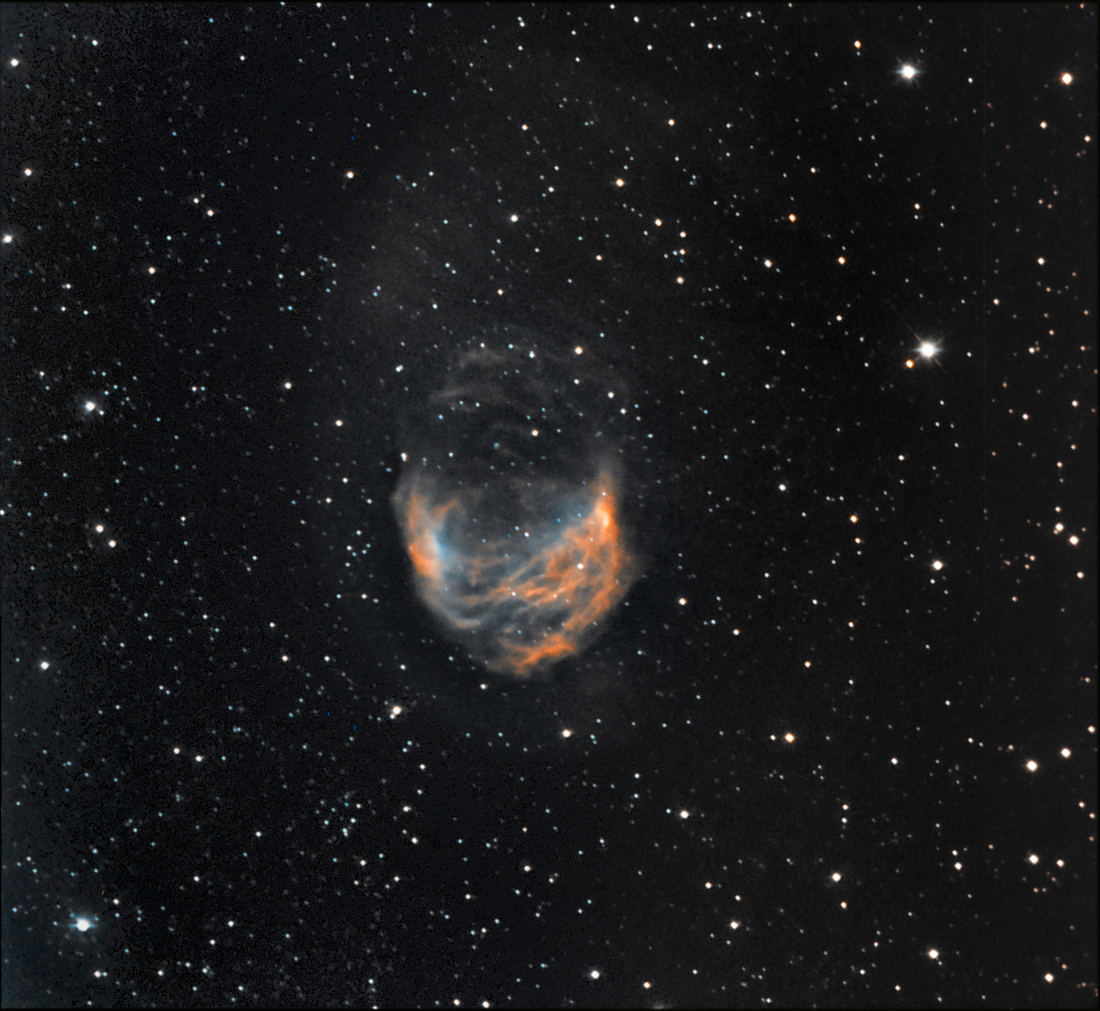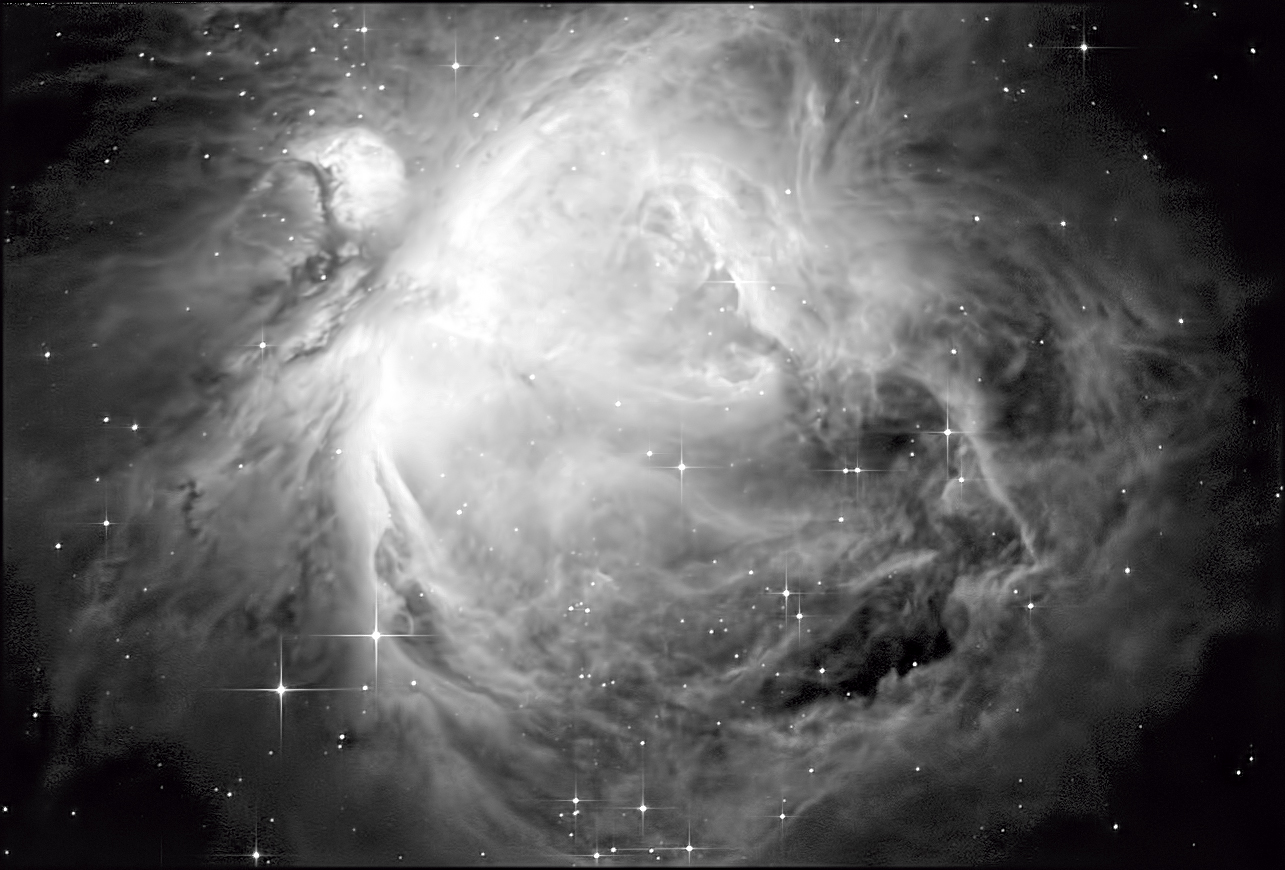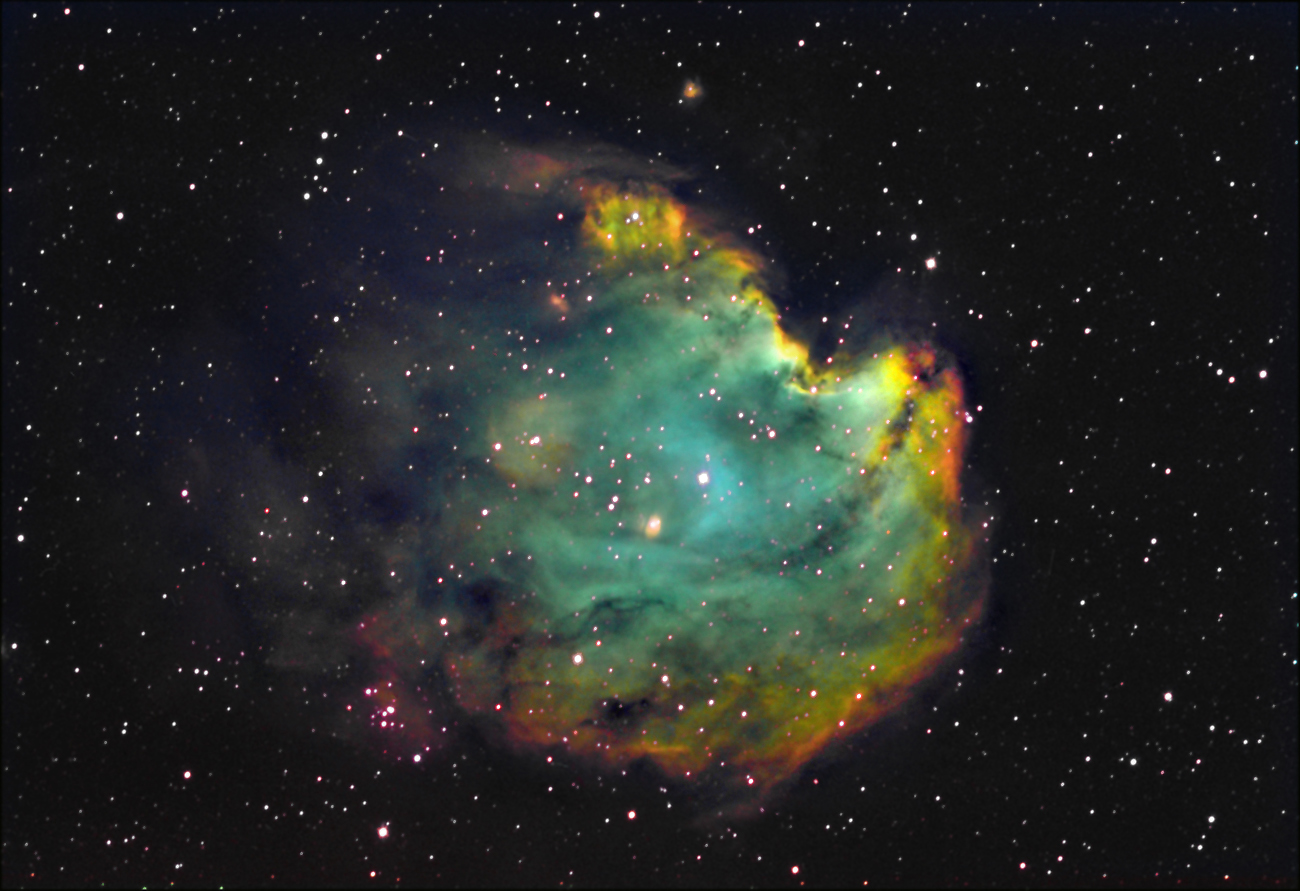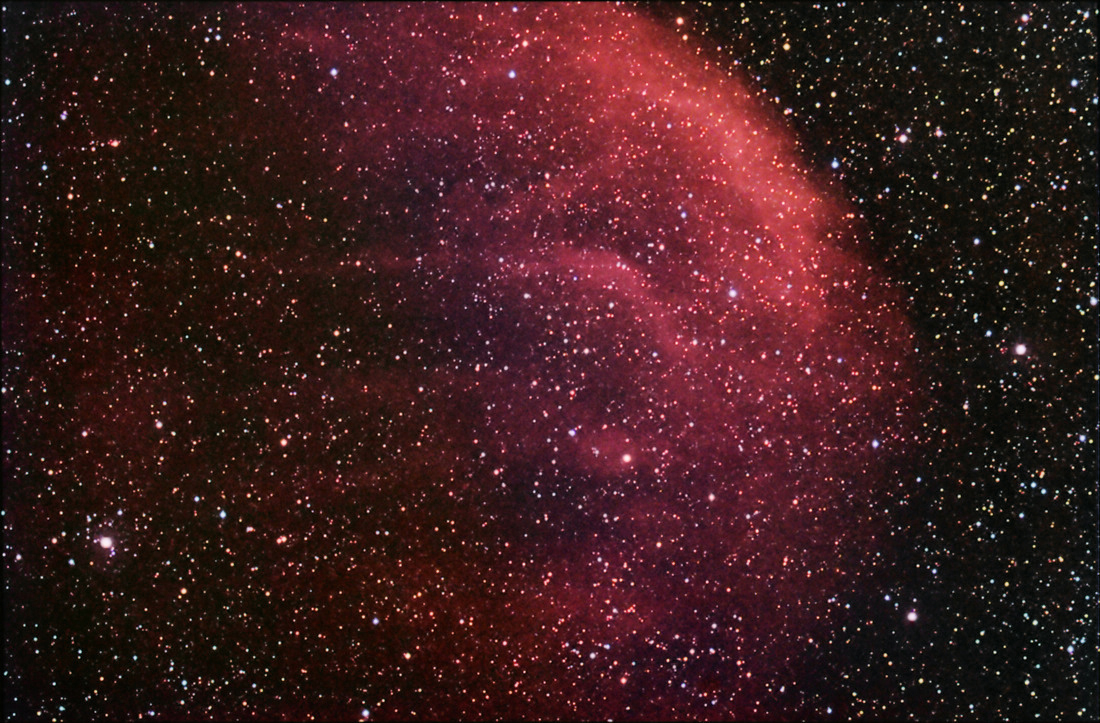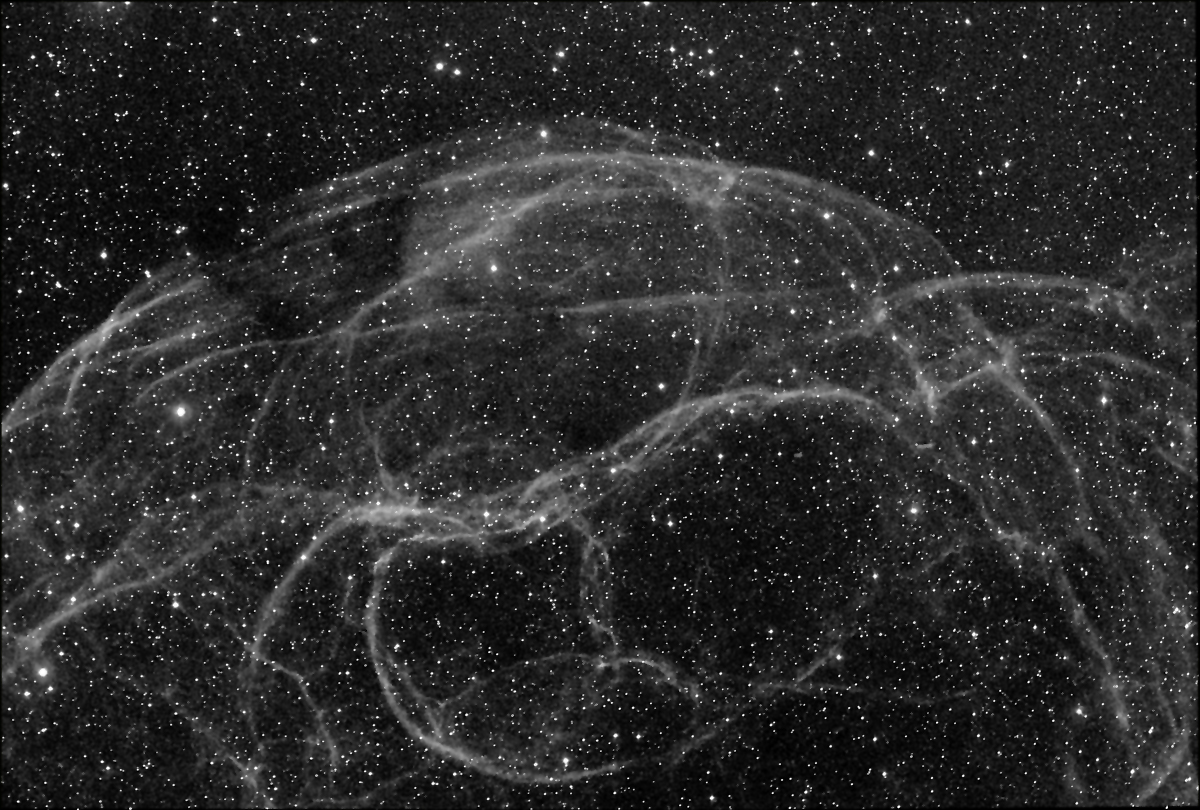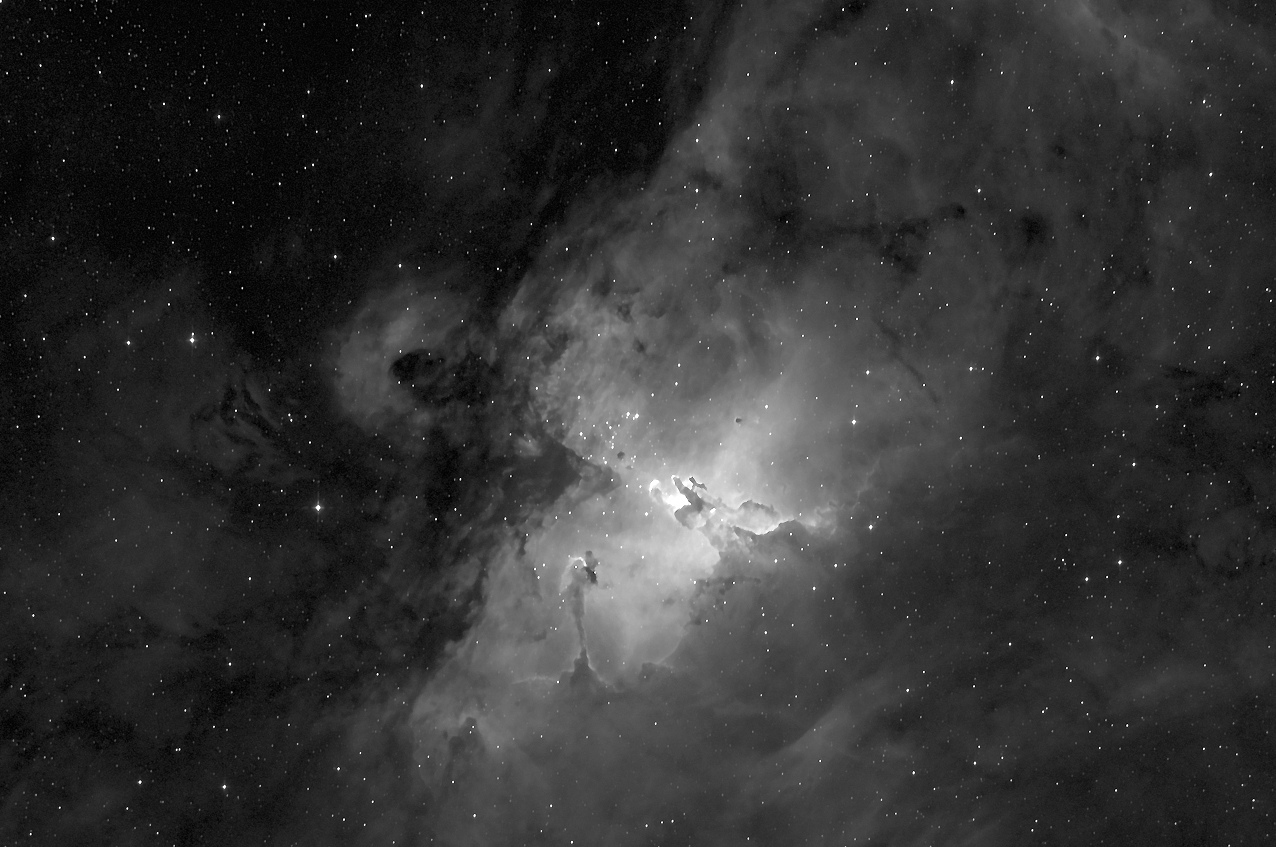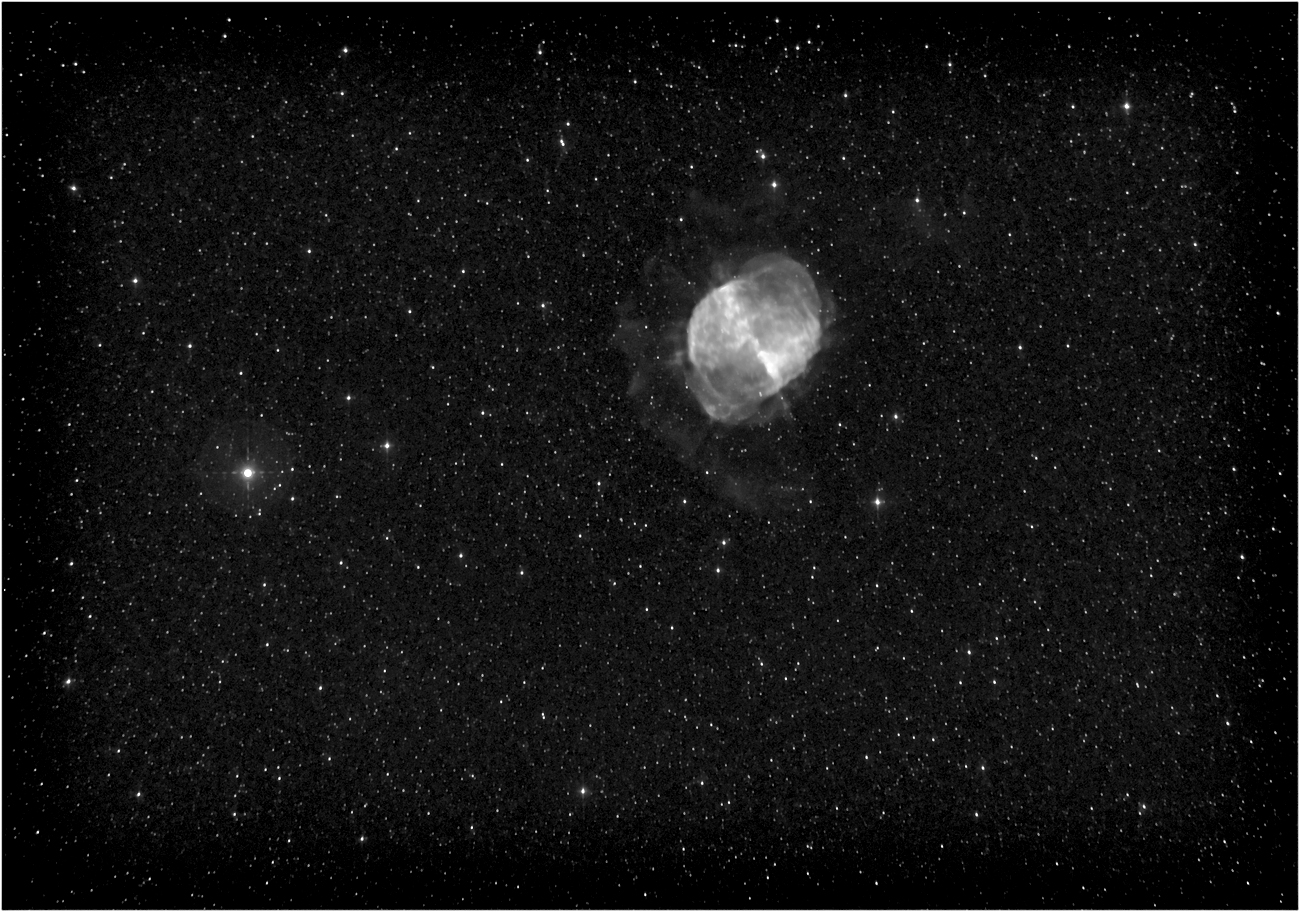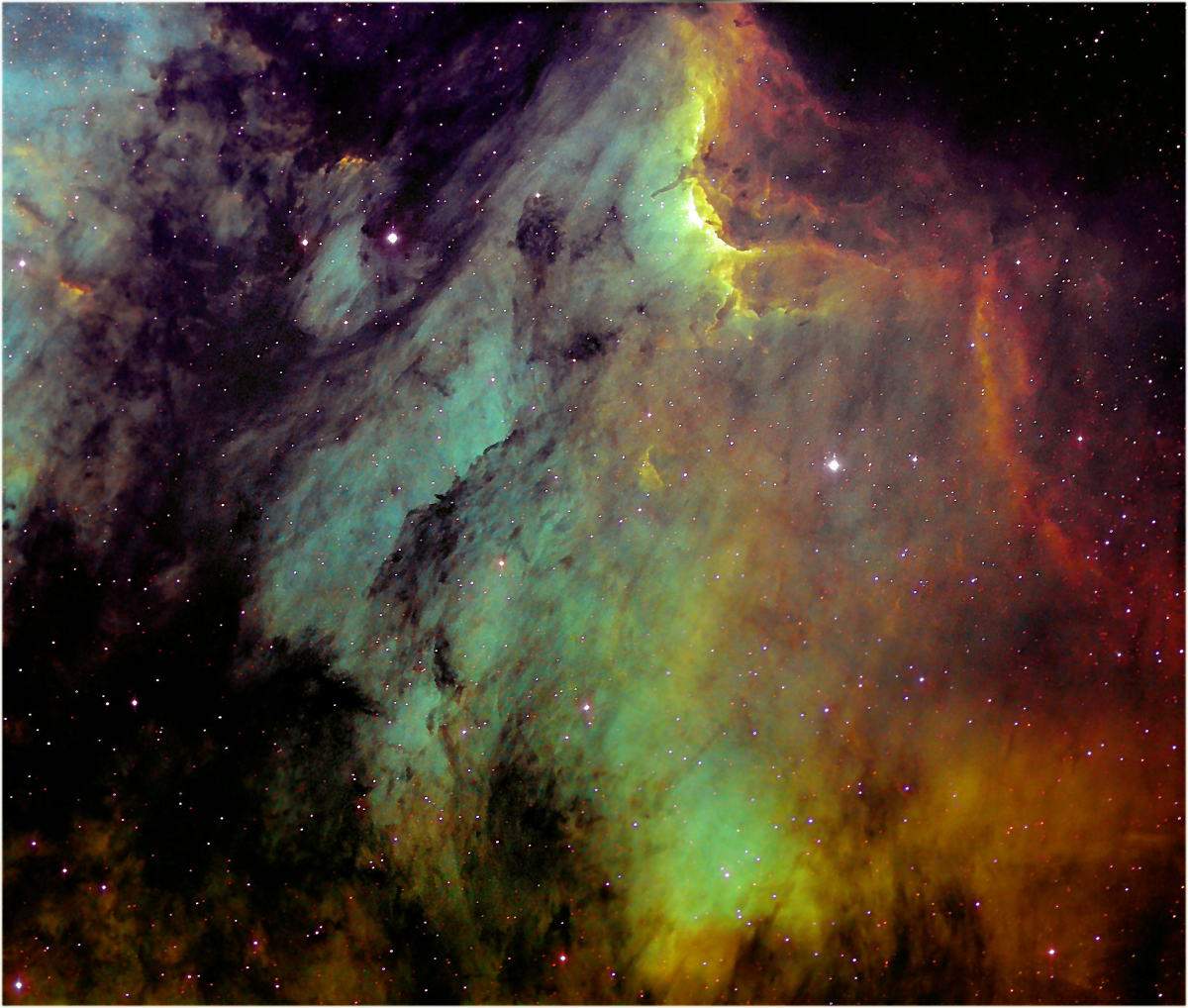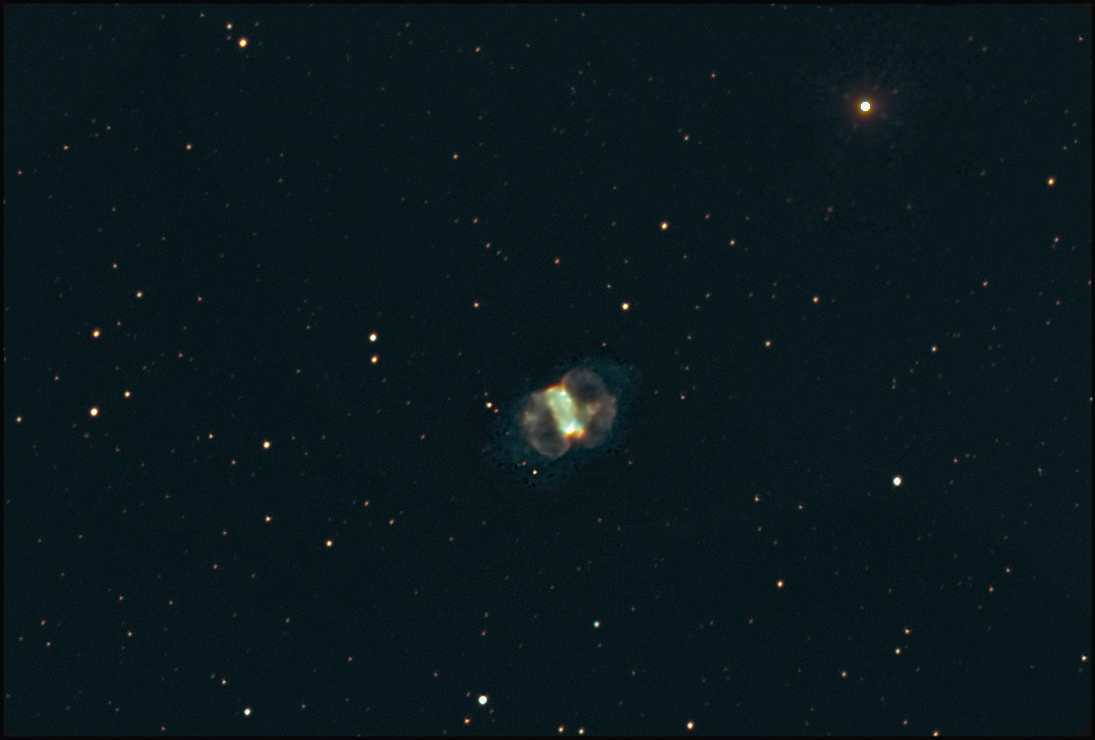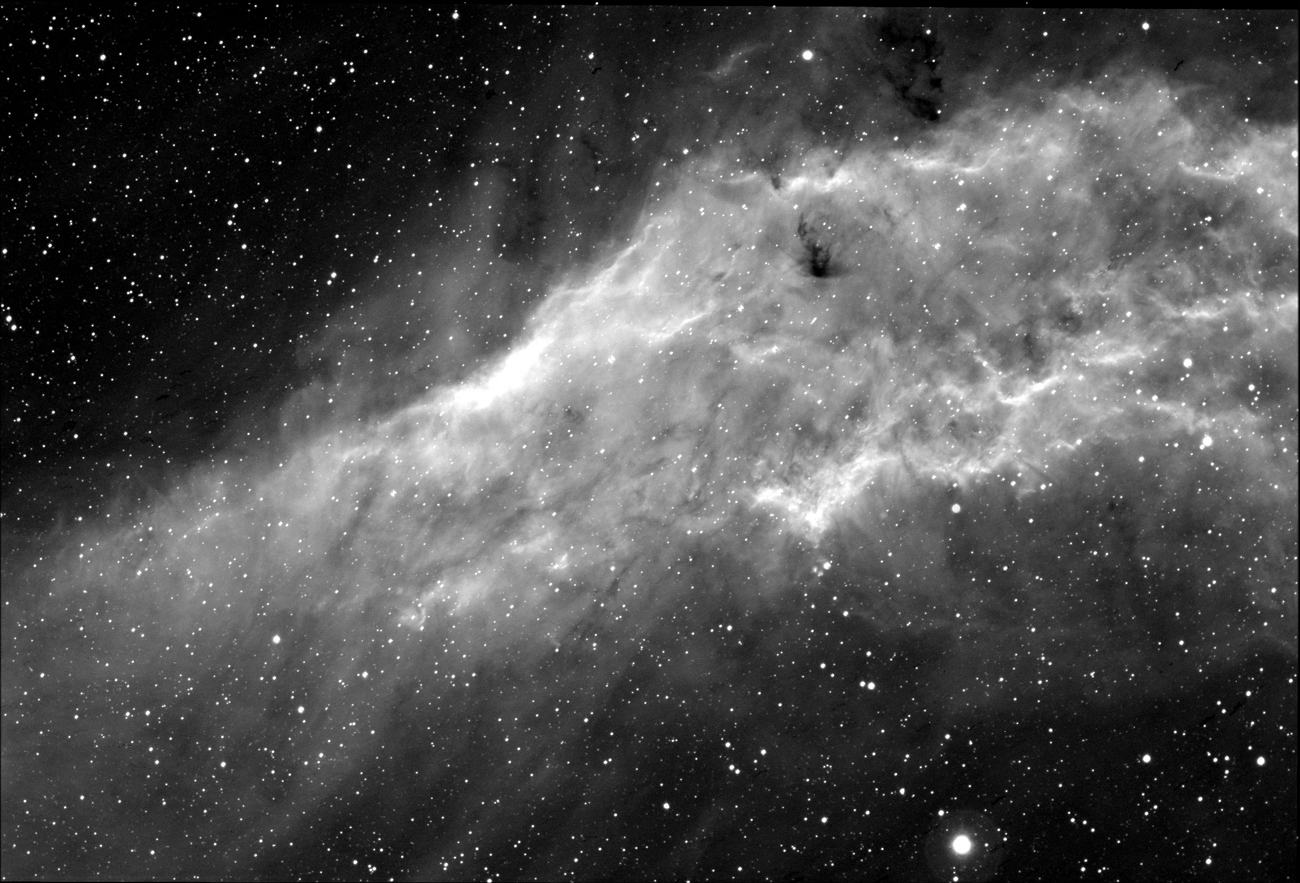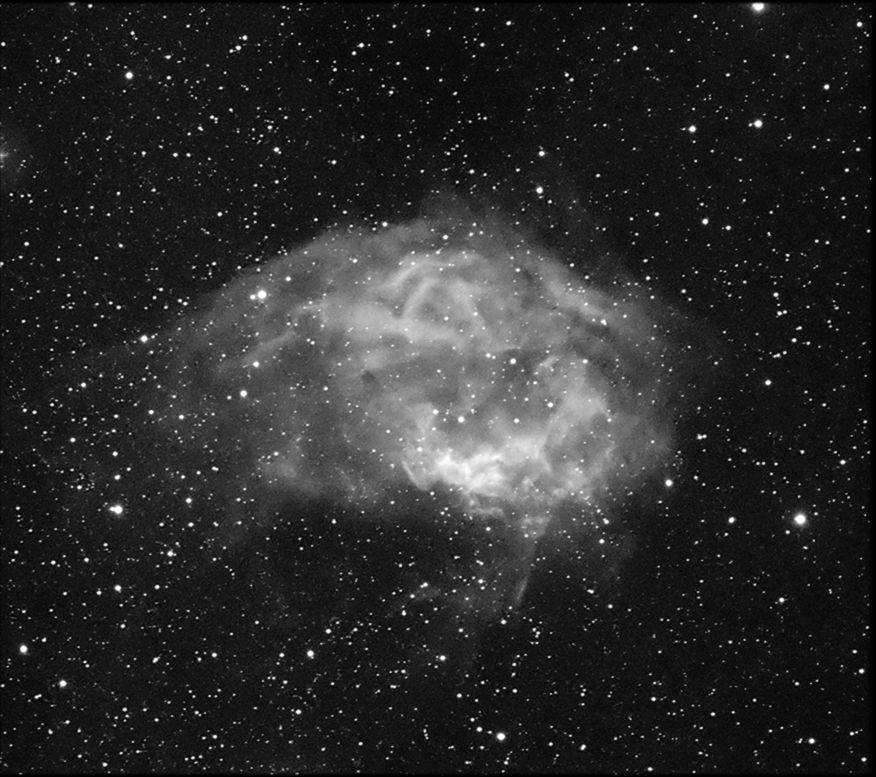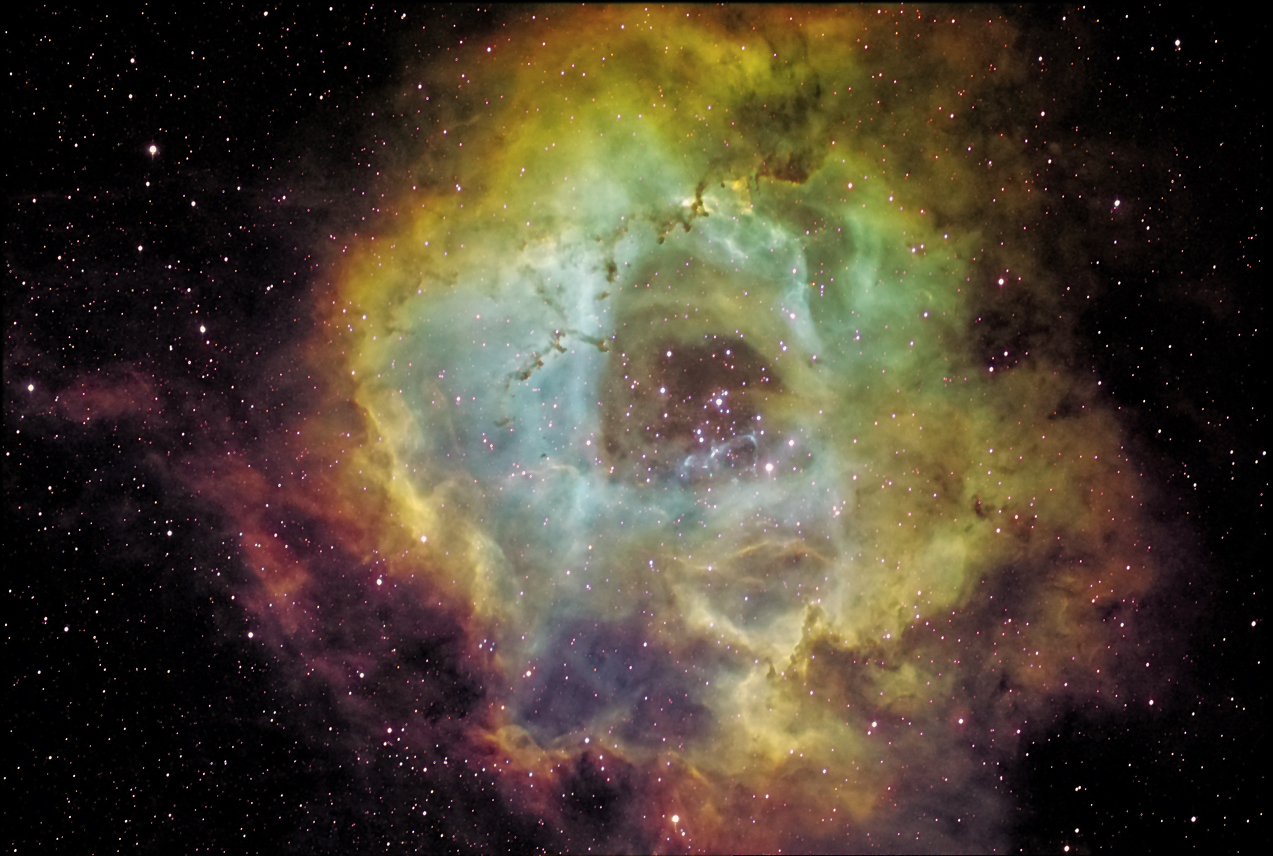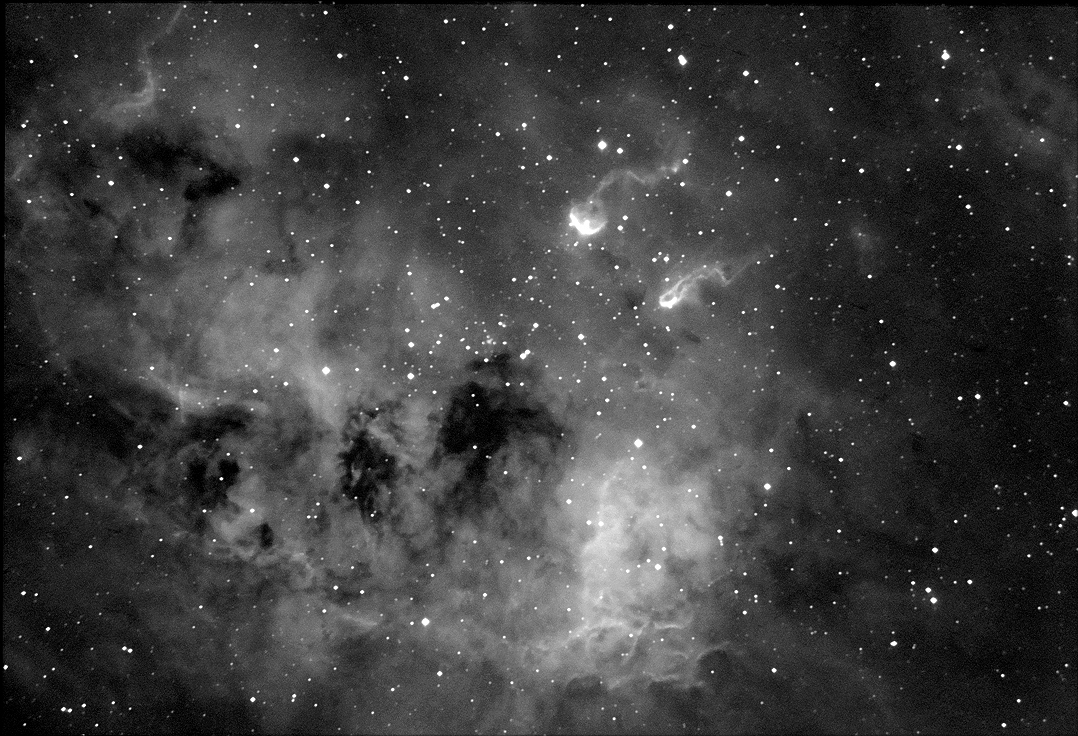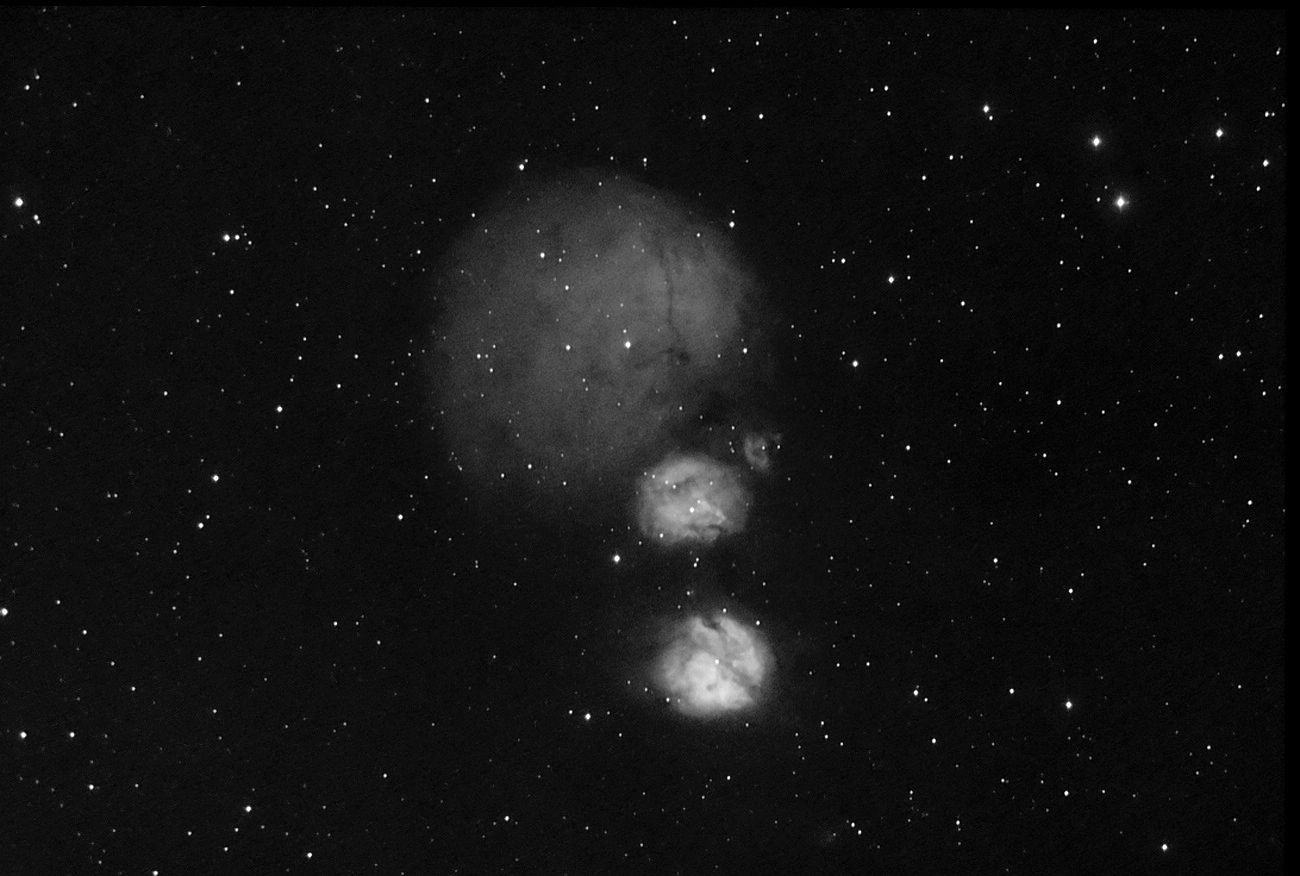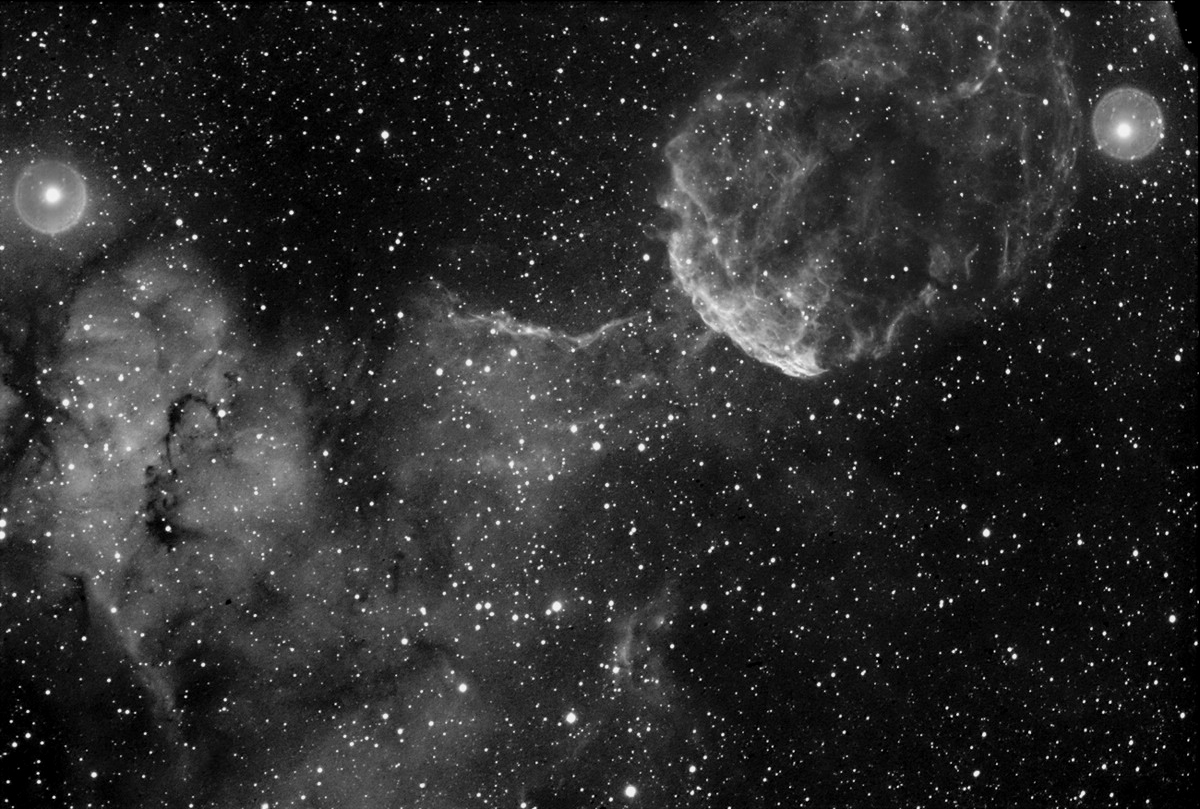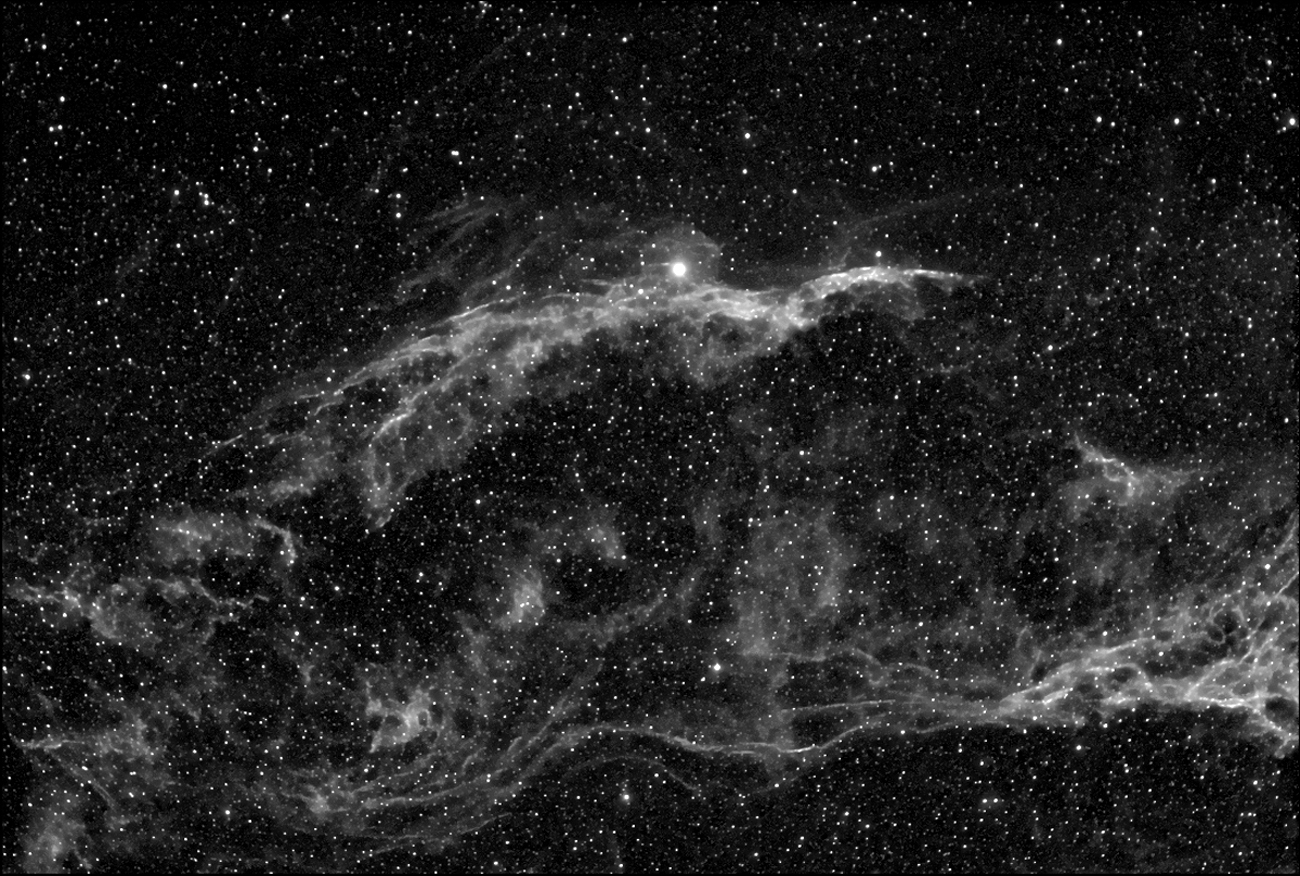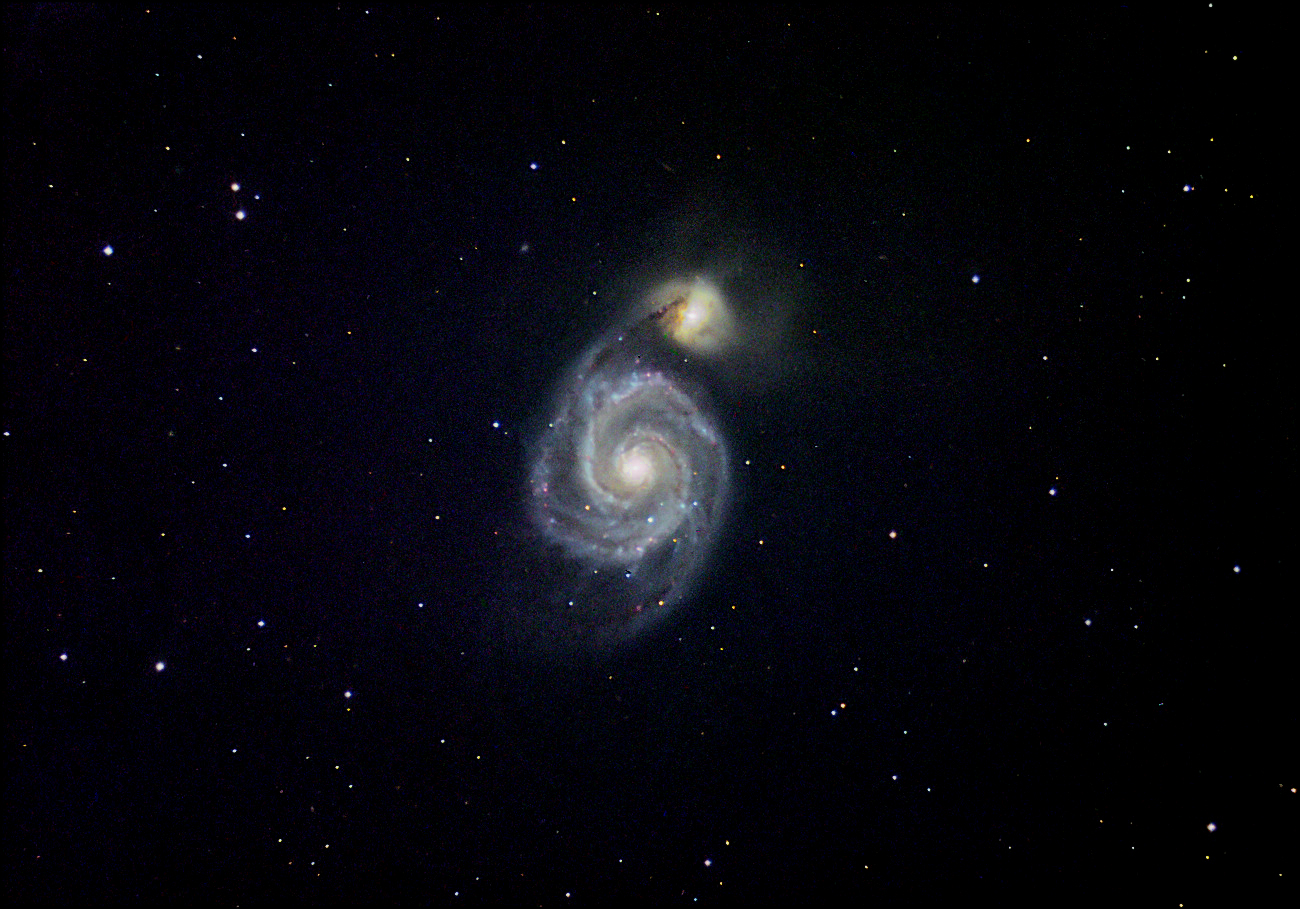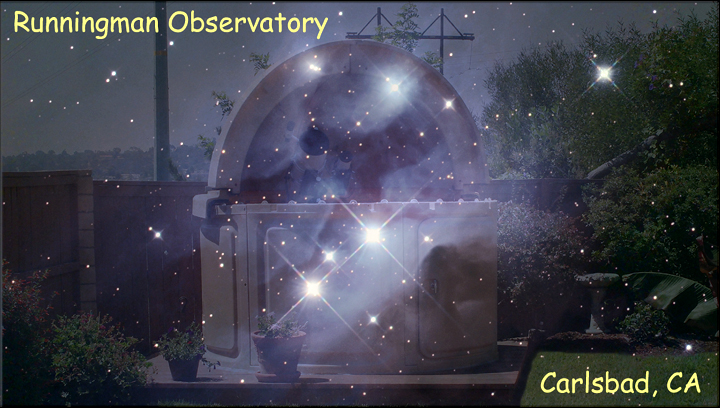 |
||||||||
Collection of Nebulae, Galaxies, and Solar System Objects Imaged from a Backyard Observatory About the Images: Unlike planets, comets, and other solar system objects, deep sky objects are quite distant and faint. The closest nebulae are approximately 300-500 light years away, while the most distant galaxy shown in this collection is 25 million light years away. Such distances require very extended camera exposure times - on the order of hours. Total exposure times for some objects are in excess of 7 hrs with 3-4 hrs being typical. About the Filters: Hydrogen alpha (Ha), doubly ionized oxygen (OIII) and ionized sulfur (SII) filters are used to record emission lines from fundamemntal elements that comprise the chemistry of our galaxy and beyond. Visible light from a narrow bandwidth (corresponding to a particular gas) is color mapped onto red (sulfur), green (hydrogen) and blue (oxygen) channels using the standard Hubble palette. In some cases, I used only the Ha filter (no color mapping). Narrowband filters effectively block the urban glow (street lamps, shopping malls, homes) and light reflected from the moon, significantly increasing S/N. Other images were obtained using conventional LRGB filters, with an Ha filter often used to enhance the hydrogen emission. About the Equipment: These images were taken using a CCD camera from SBIG. The camera has two photosensitive chips (CCDs): a larger one to image the target object and a smaller one to lock on a nearby guide star for fine telescope position control to compensate for earth's rotation (over several hours). The camera body and filter wheel are attached a telescope and mounted on a sturdy German equatorial mount. All aspects of the imaging process (aiming, focus, guiding, filter selection, exposure time) are automatically controlled by a notebook computer.
|

